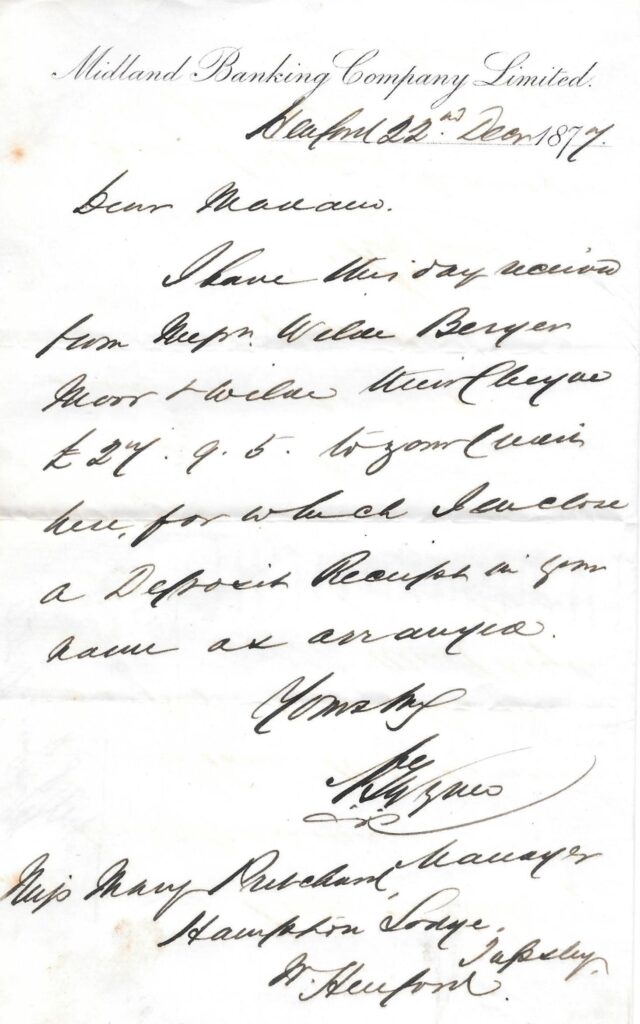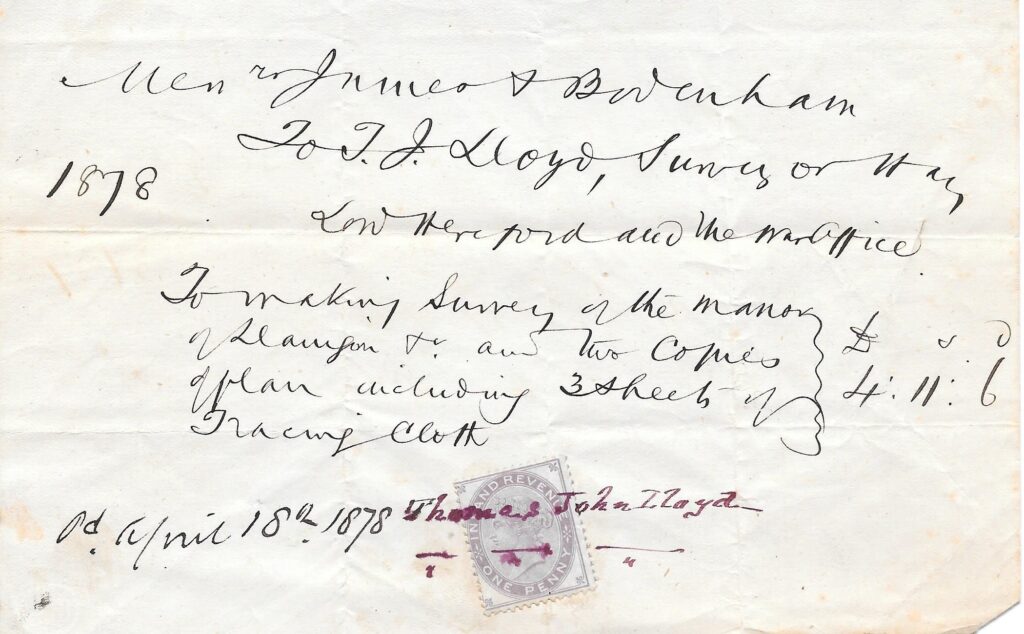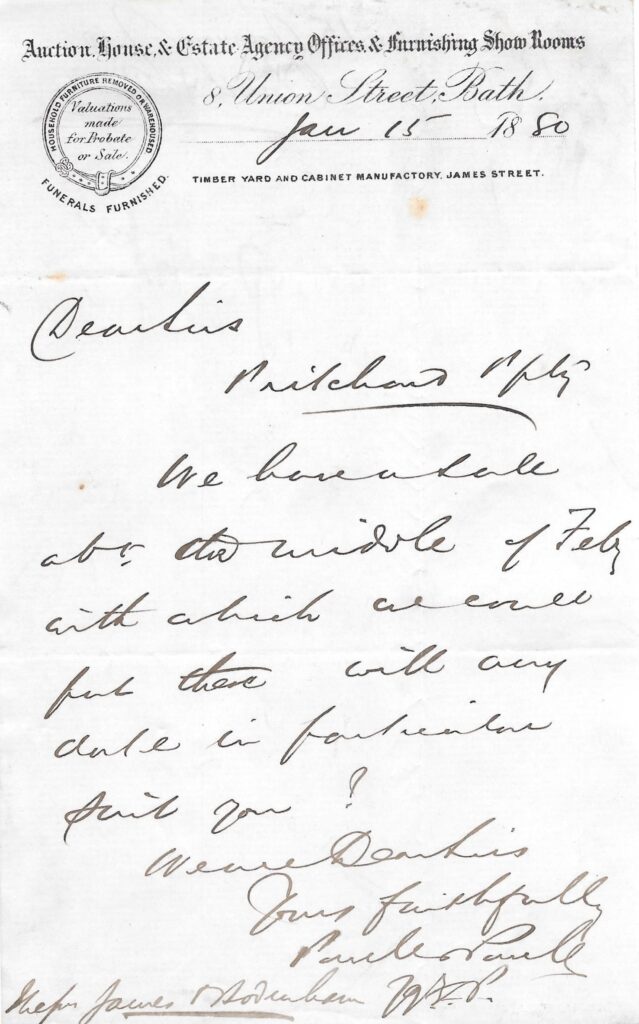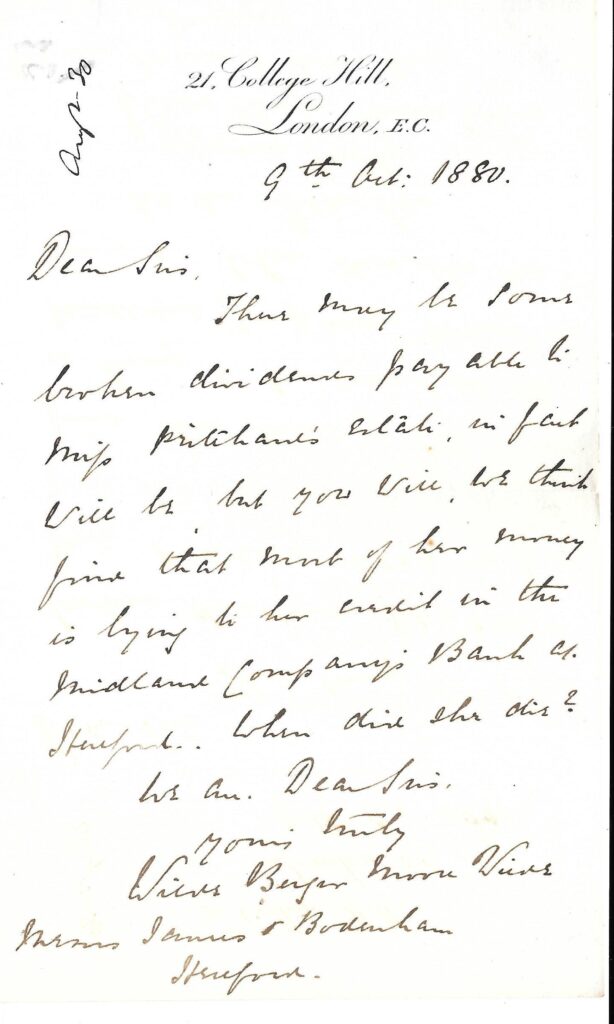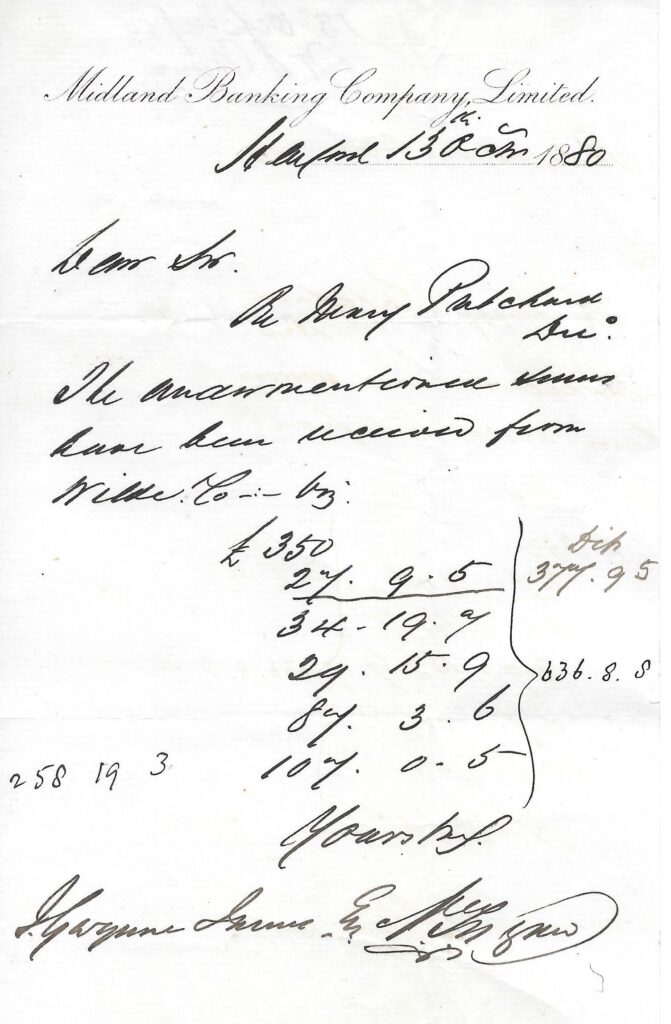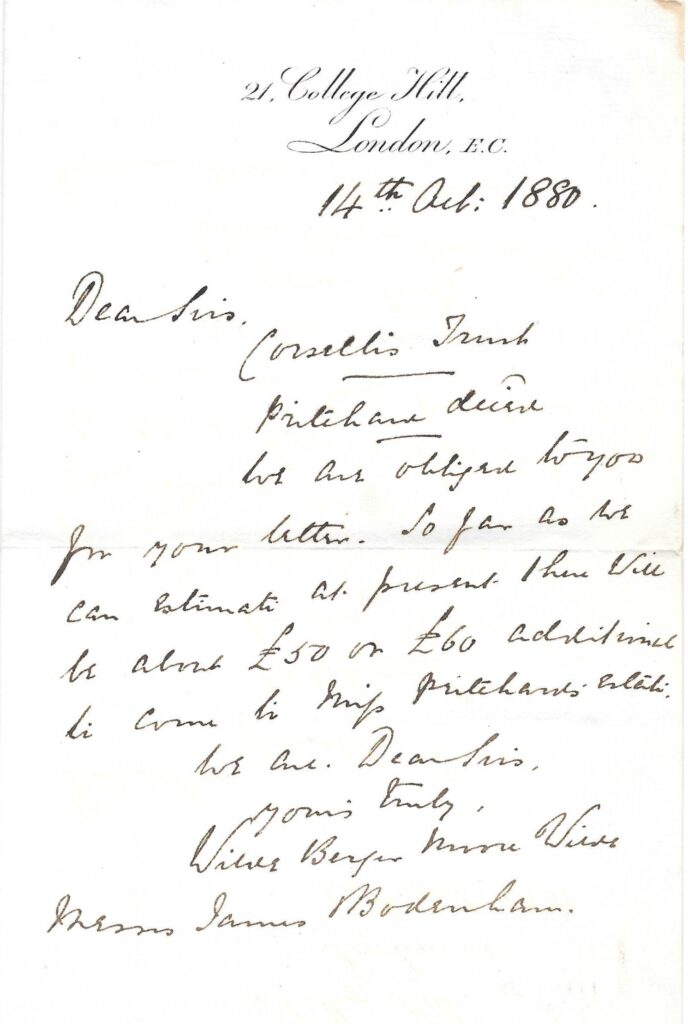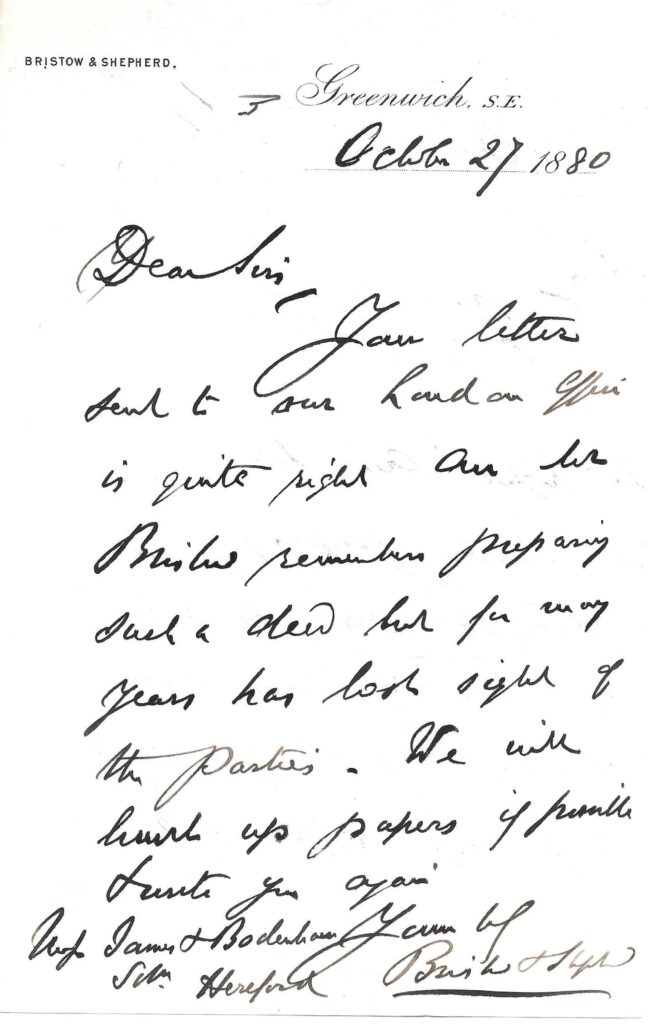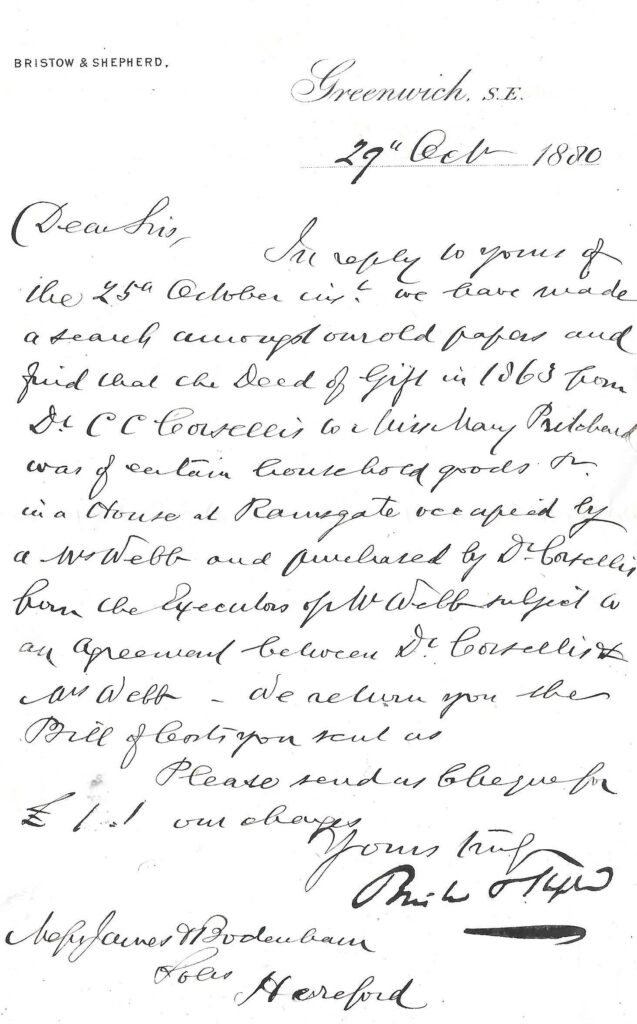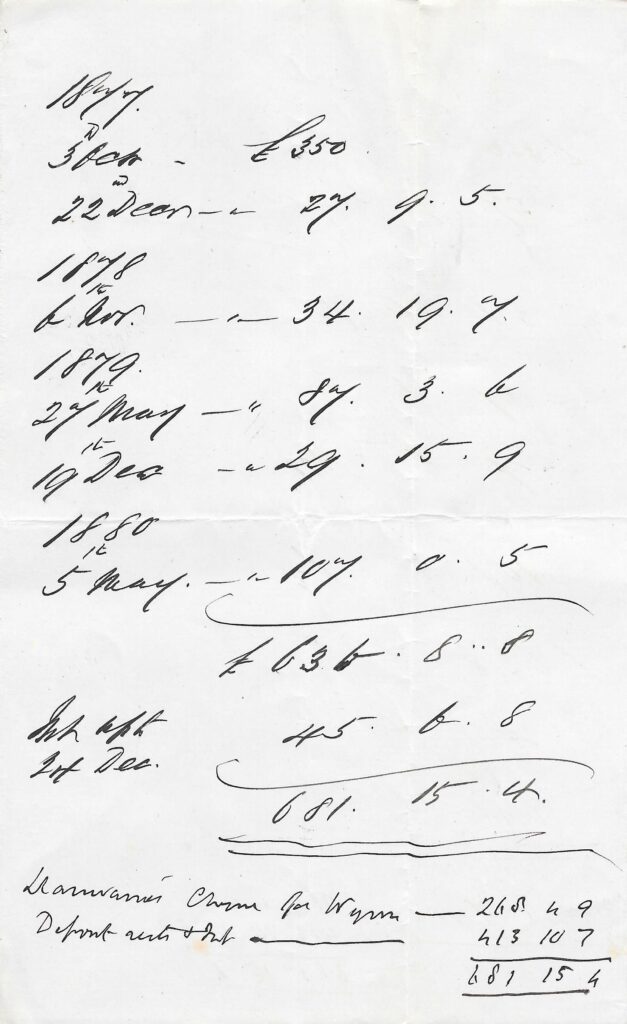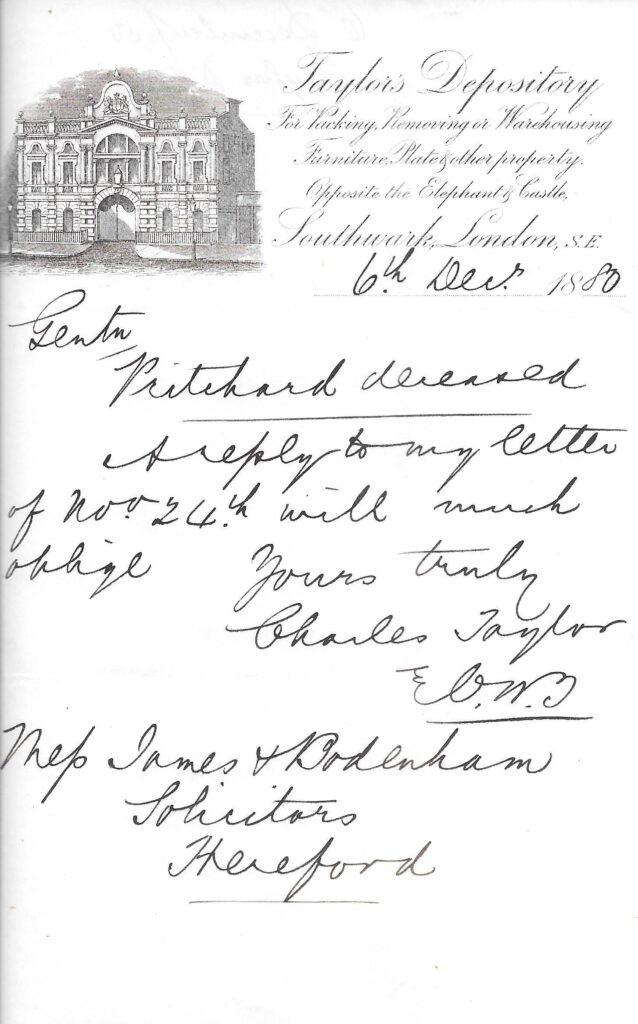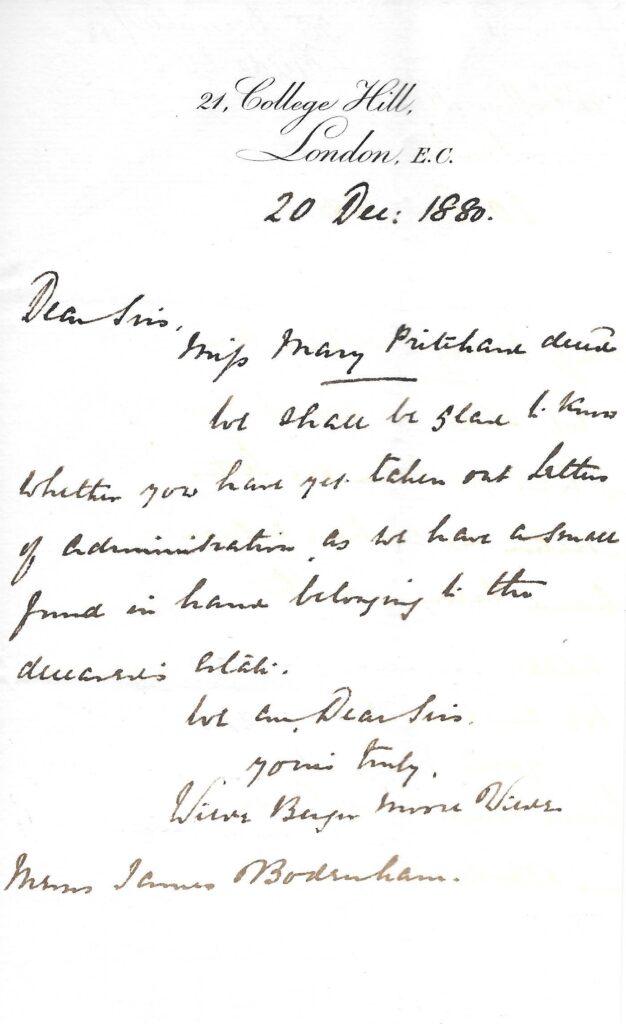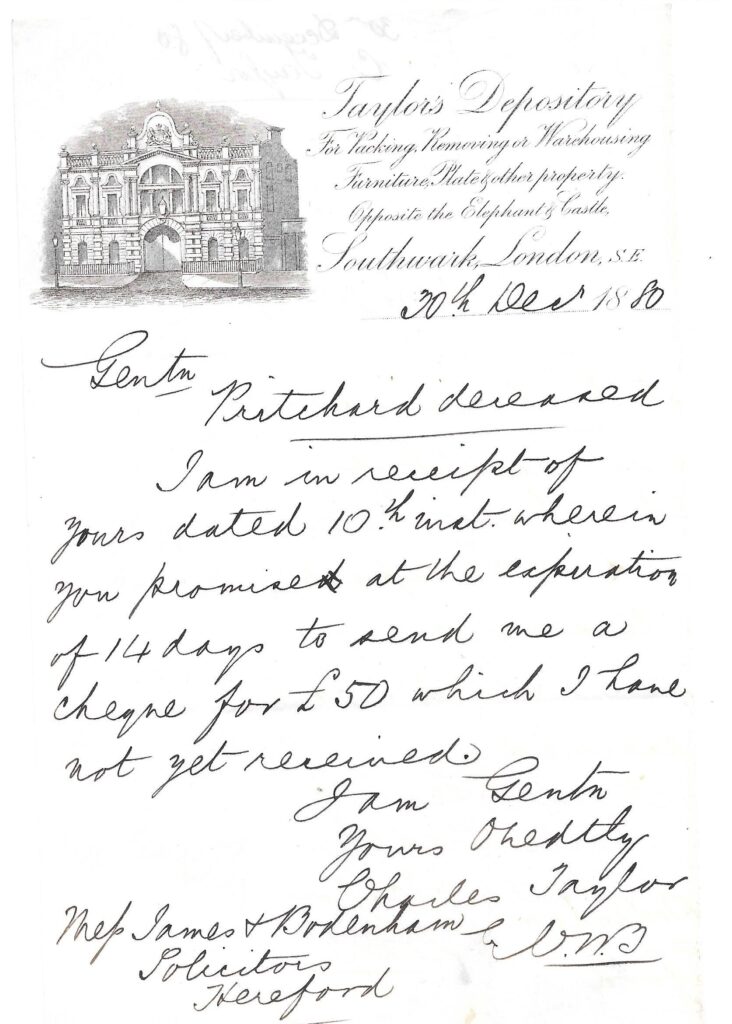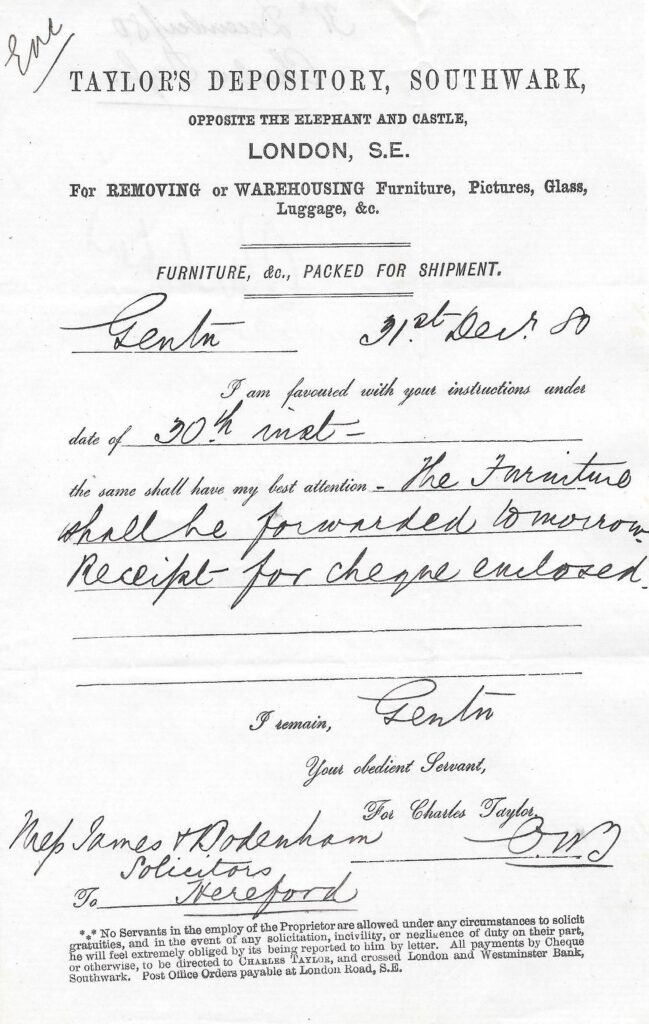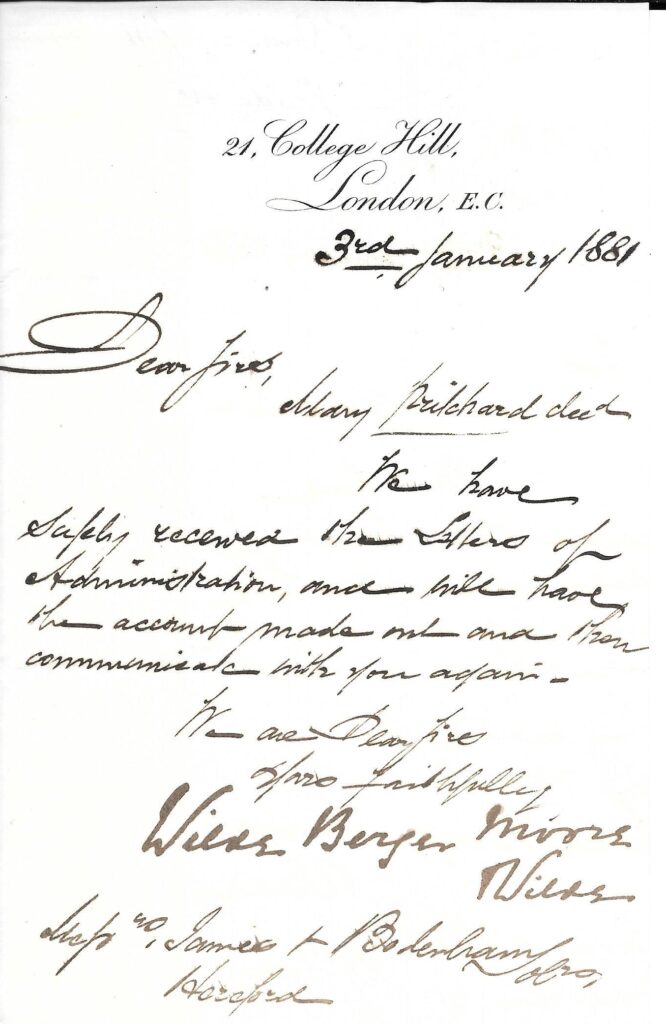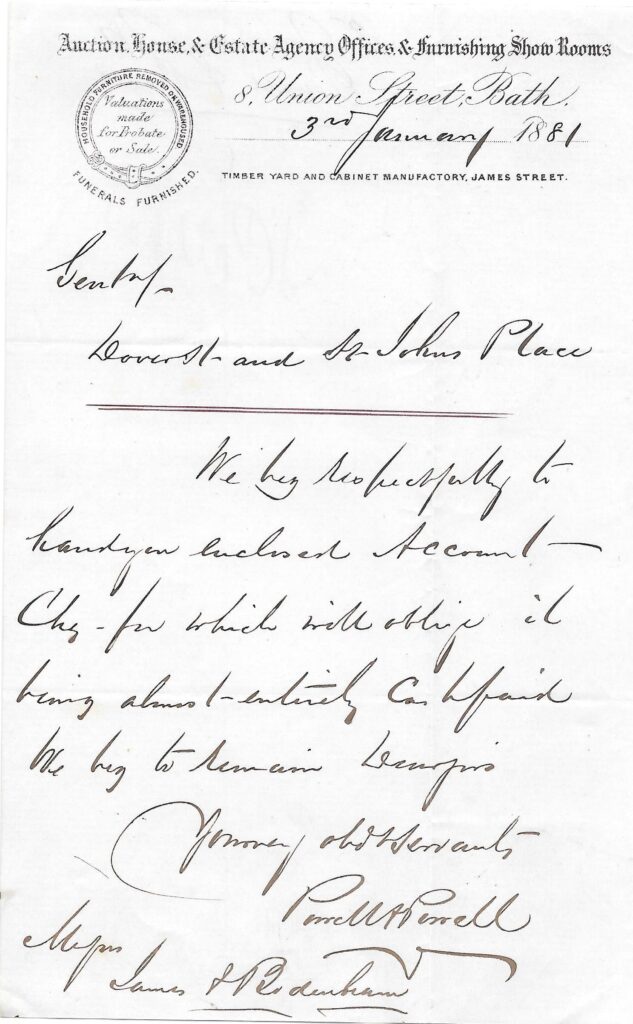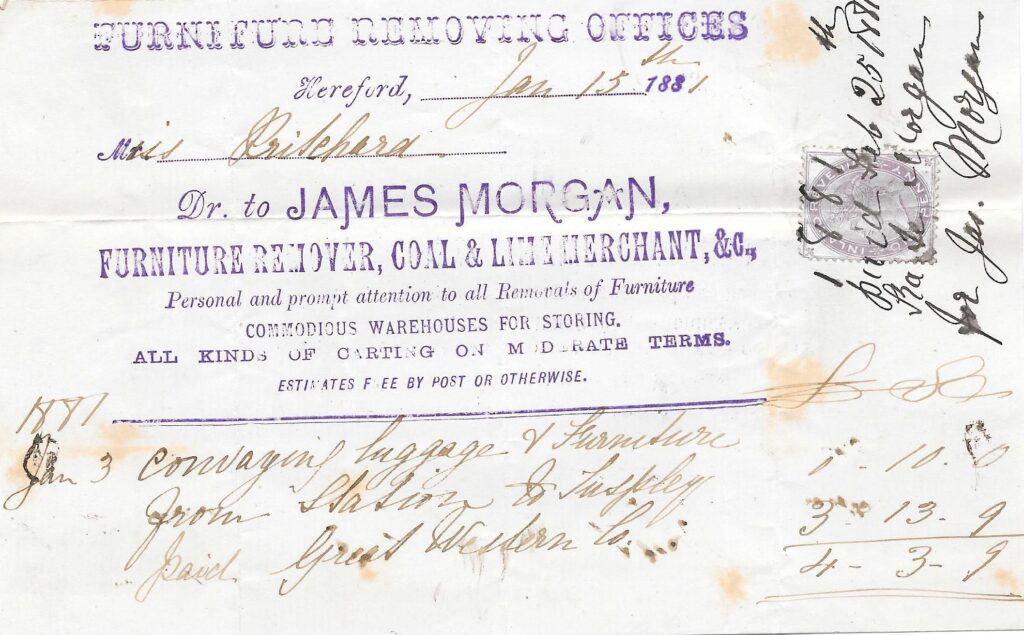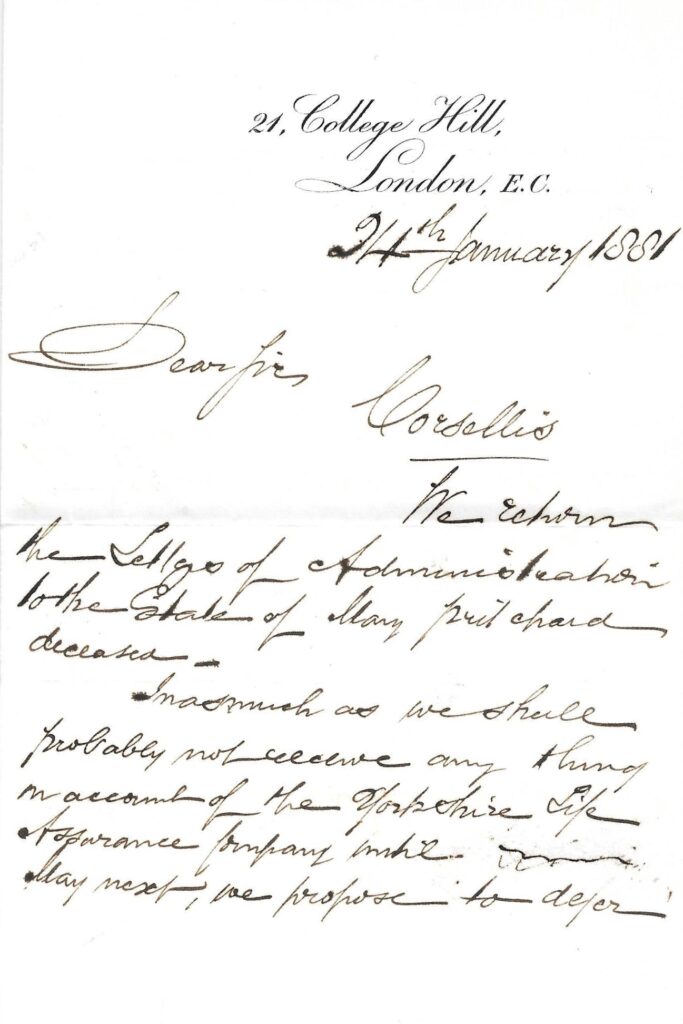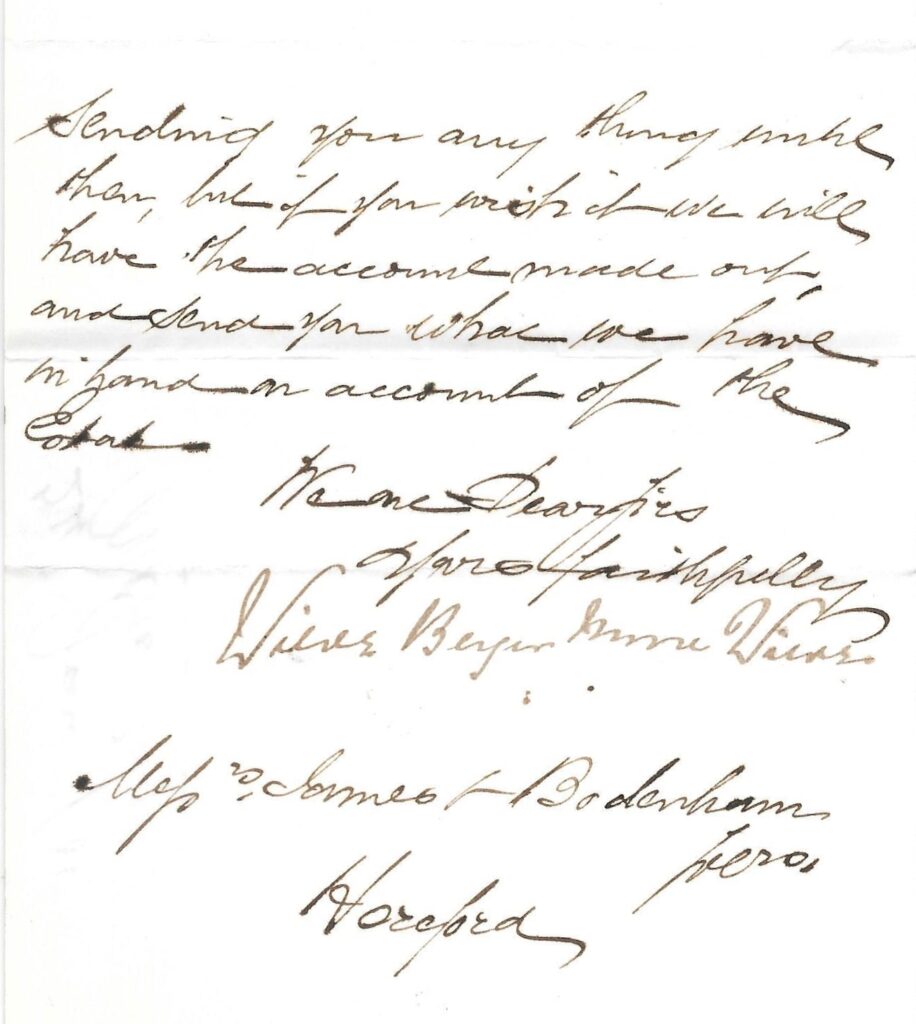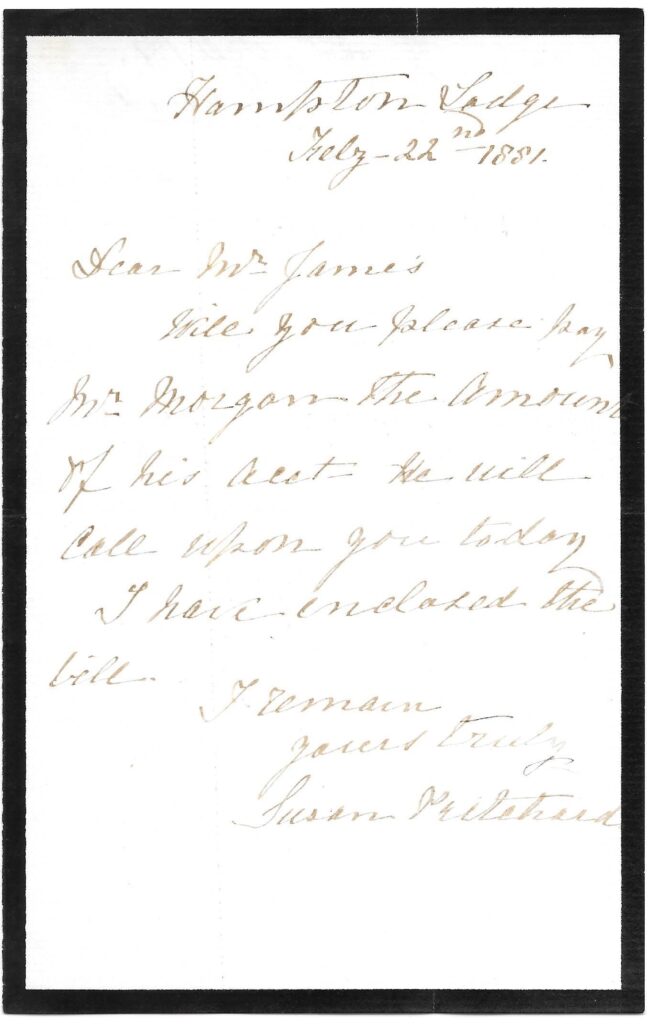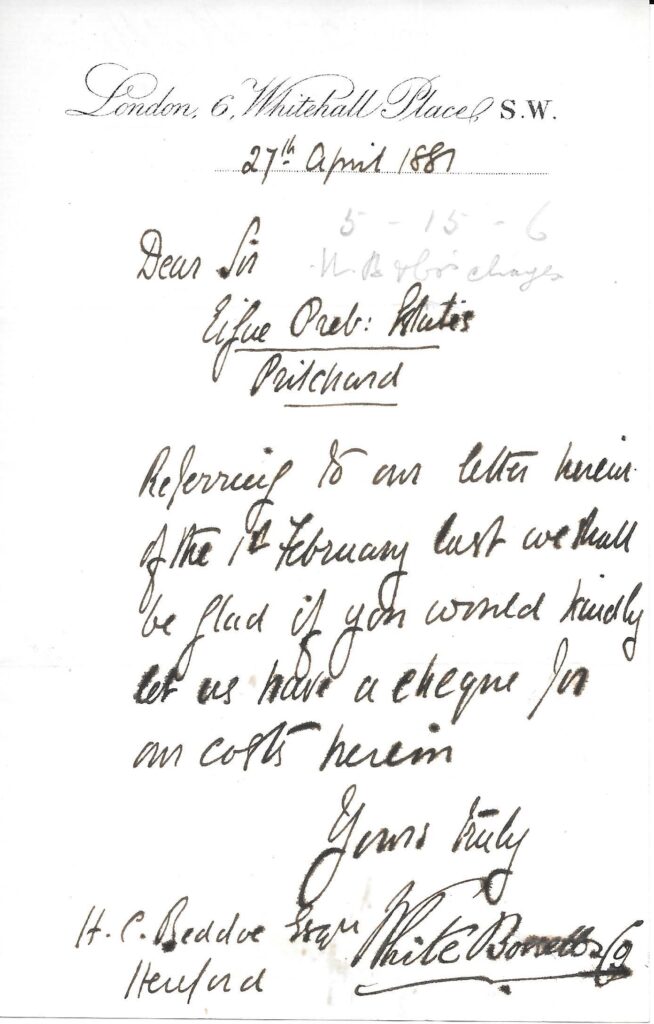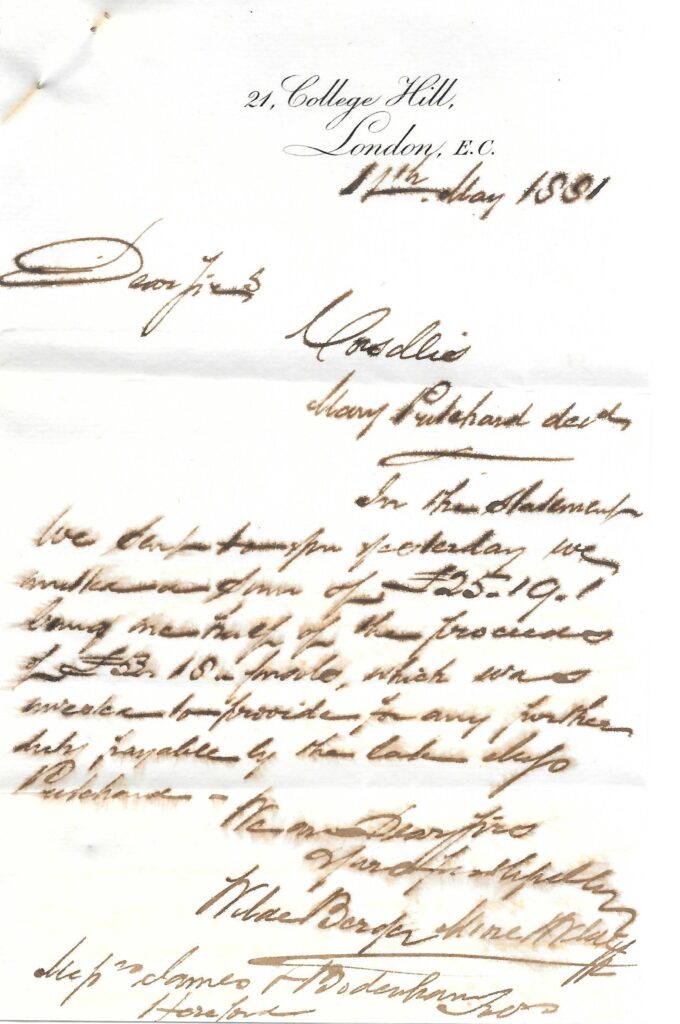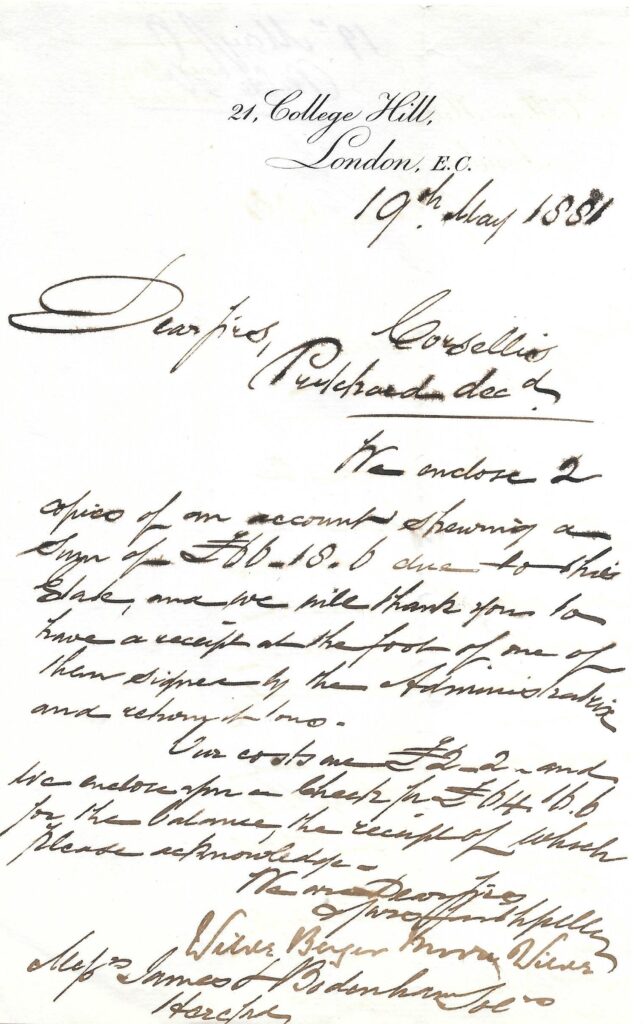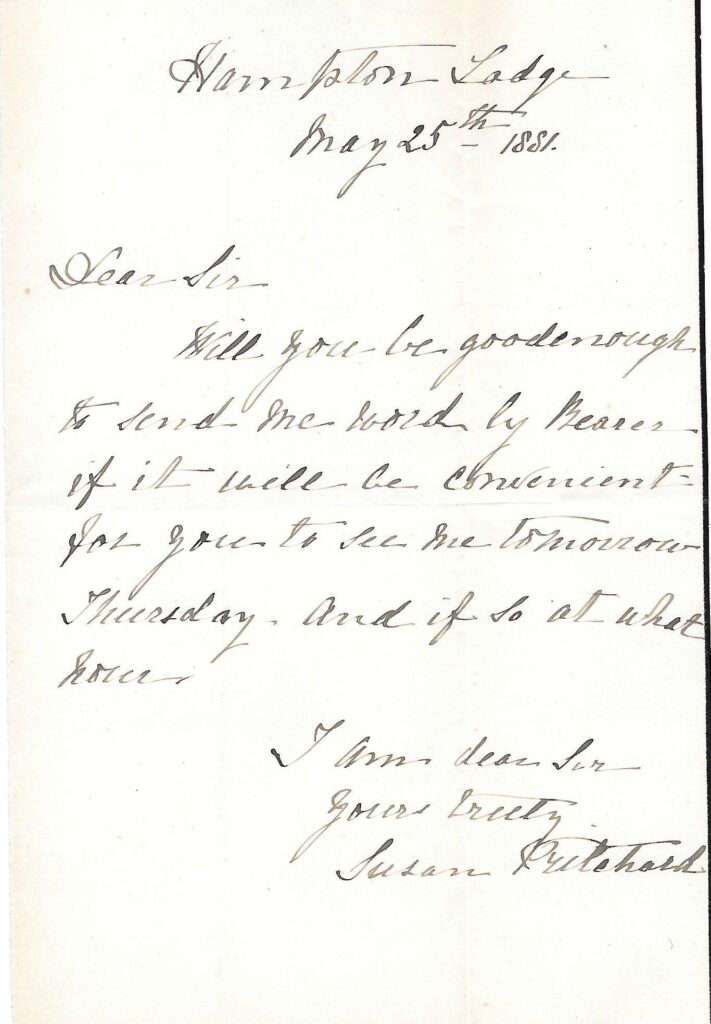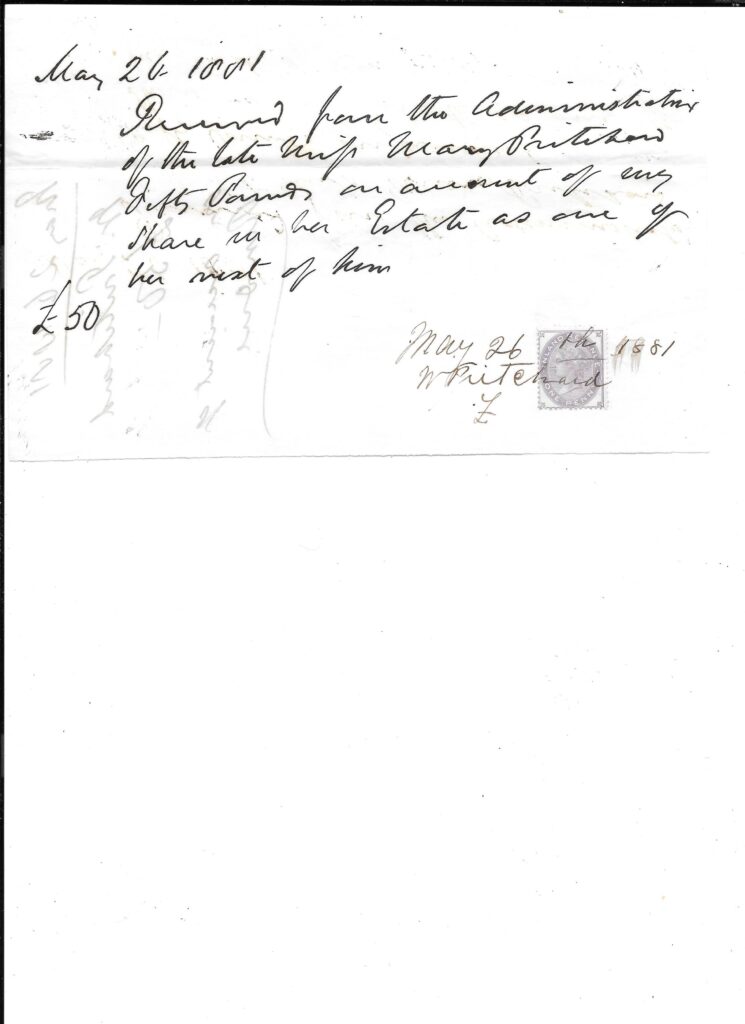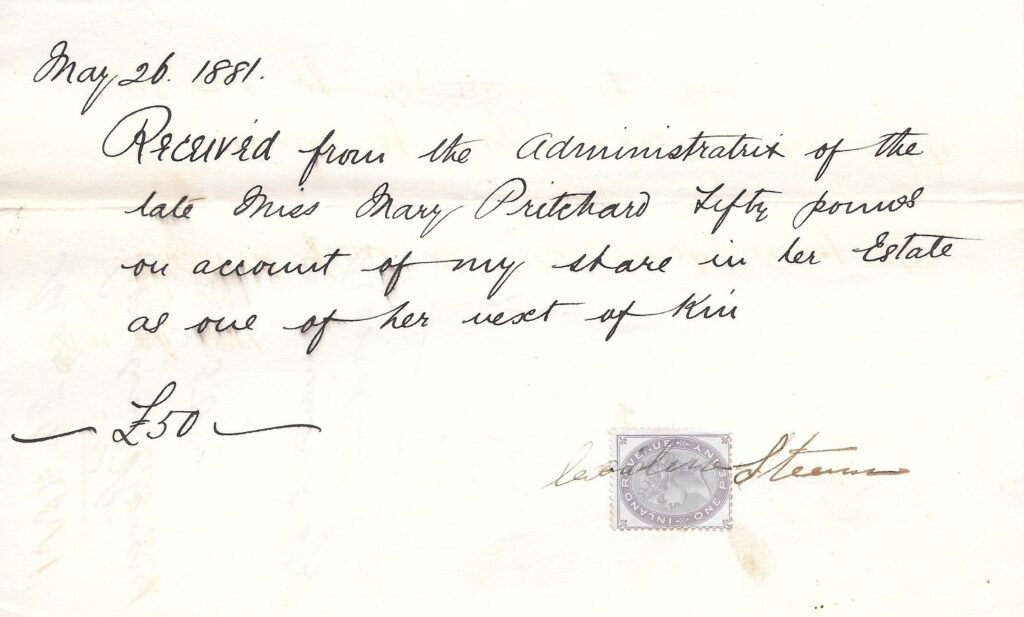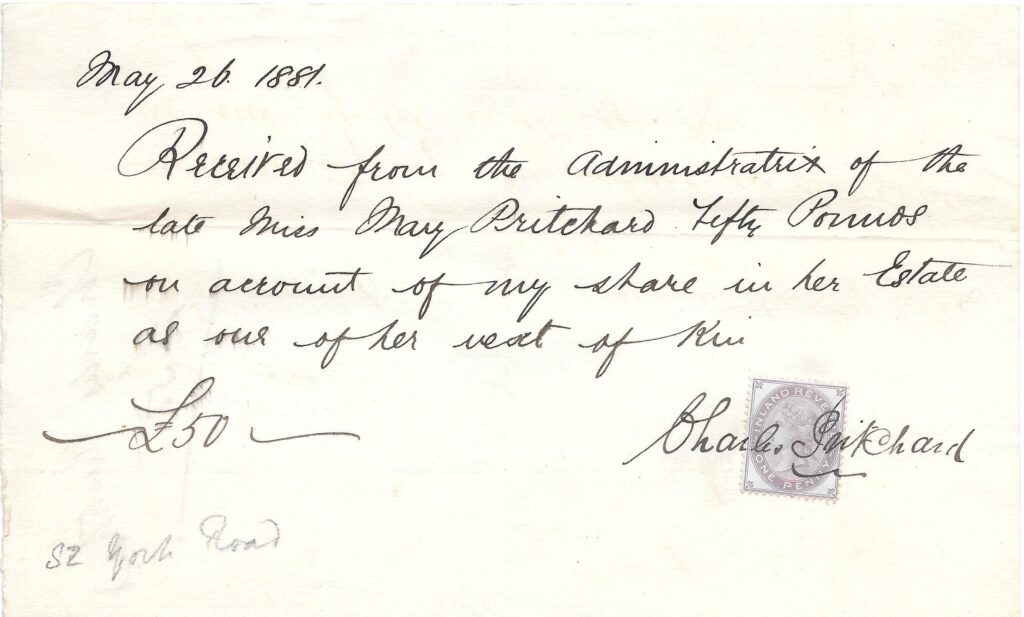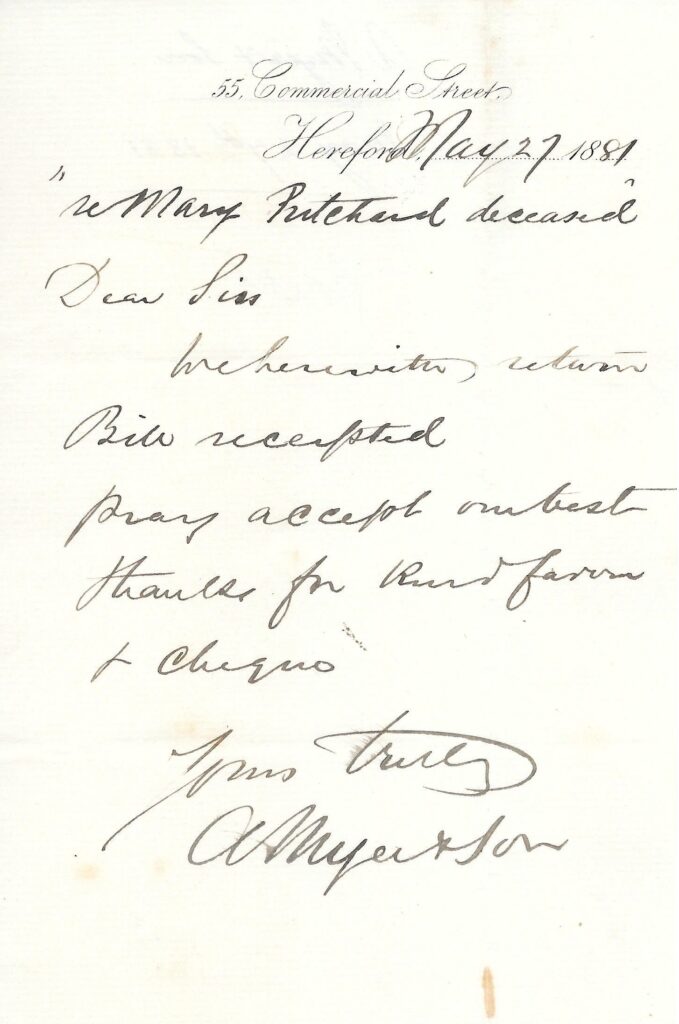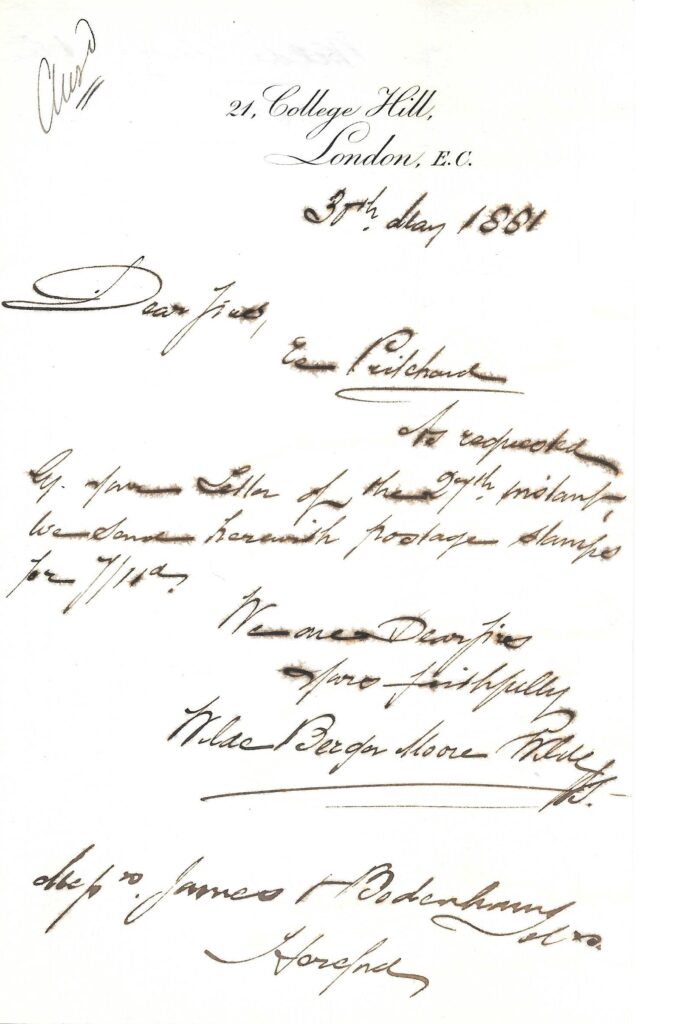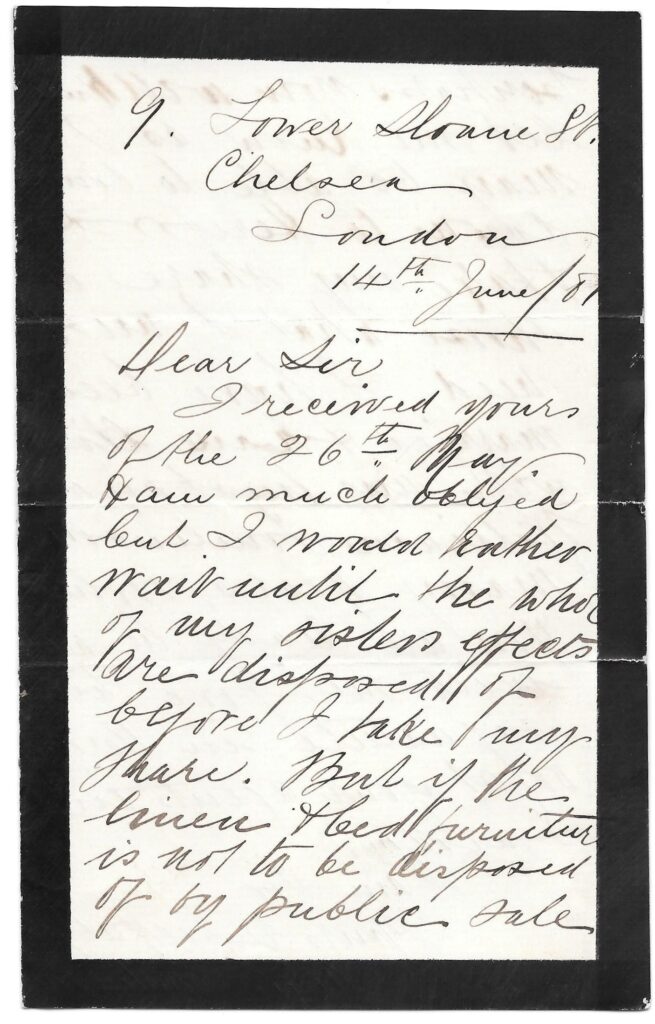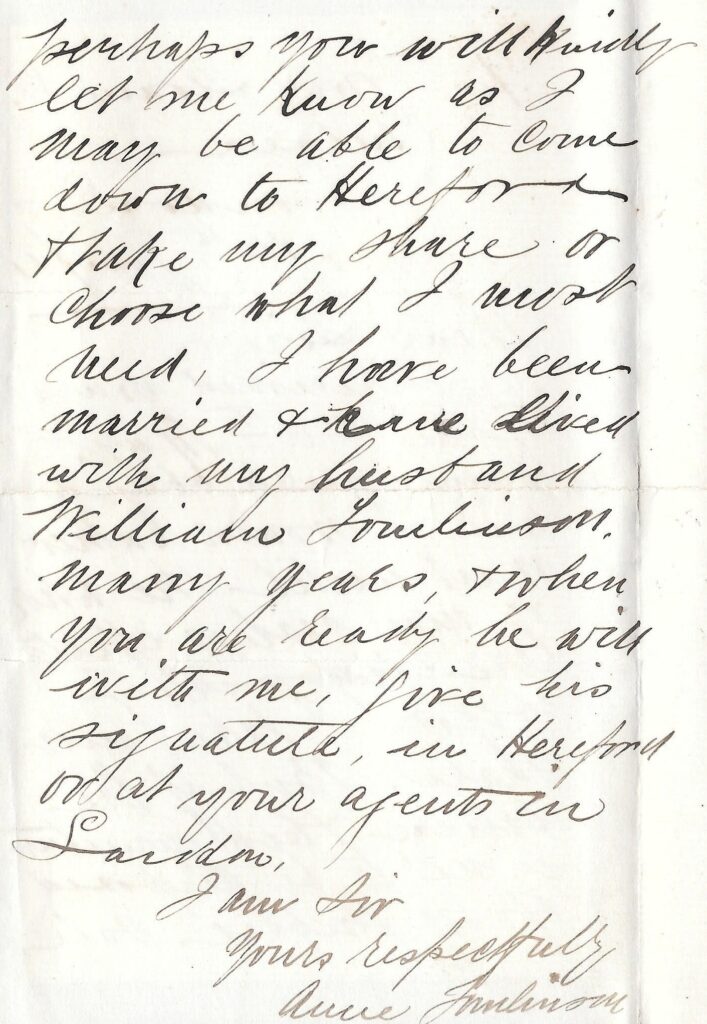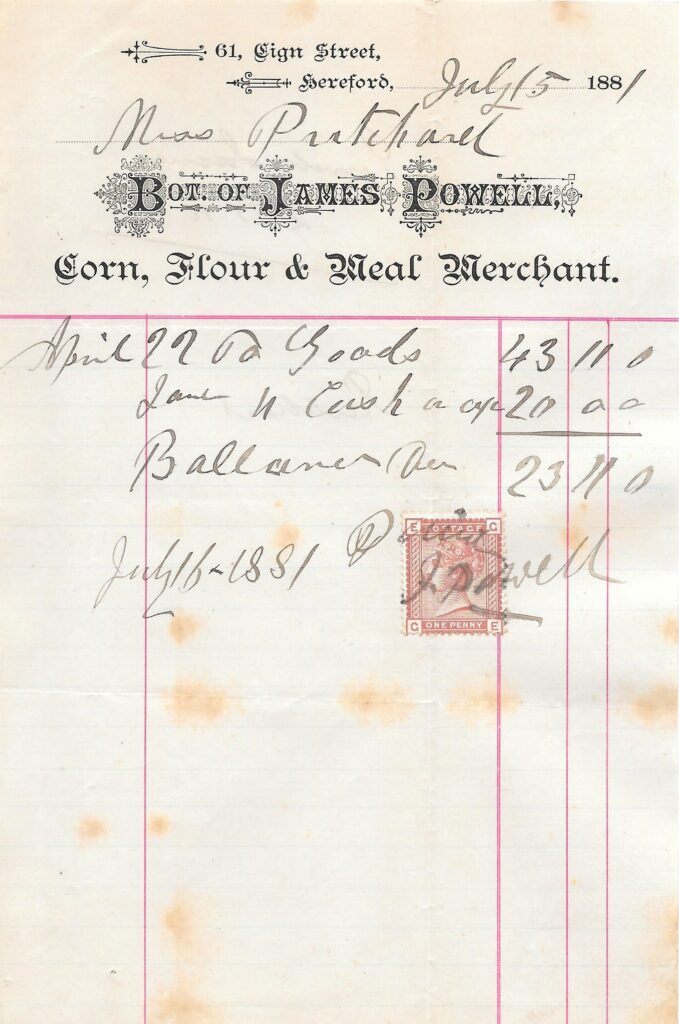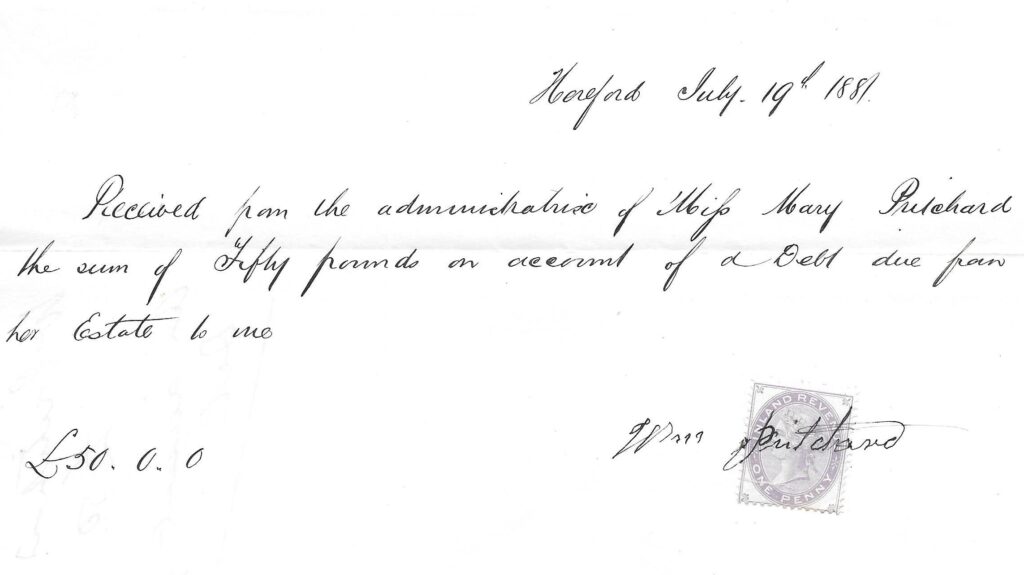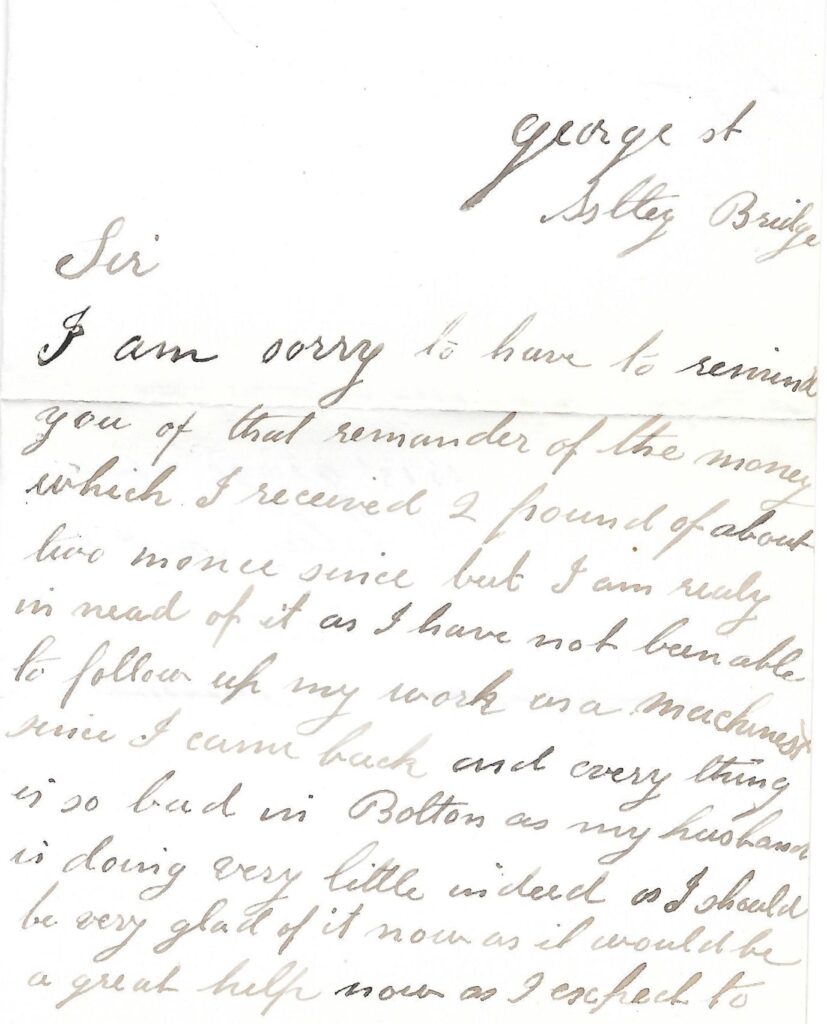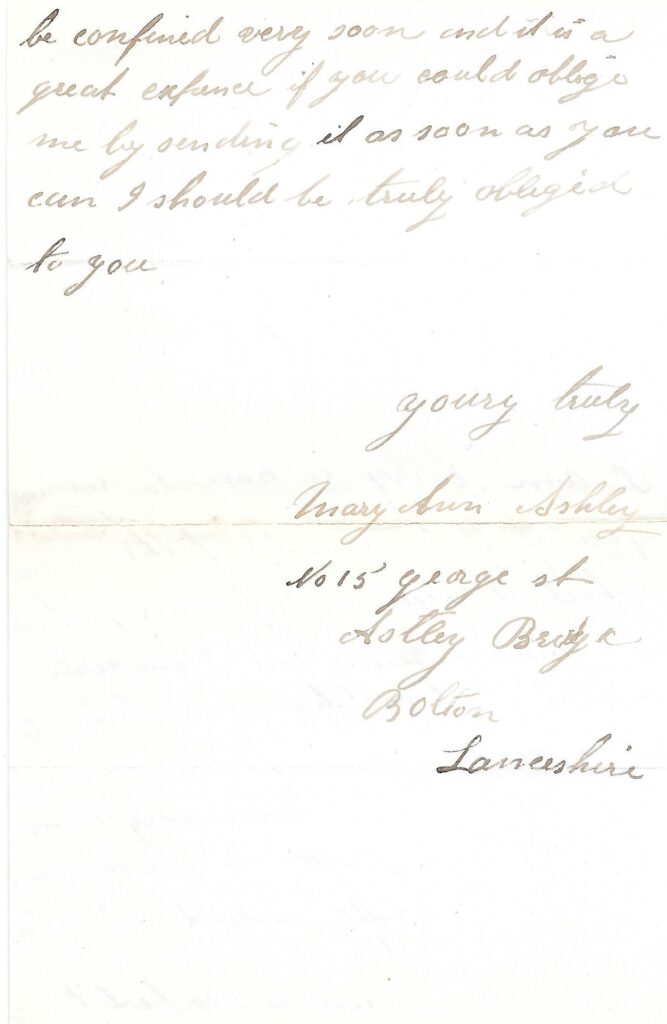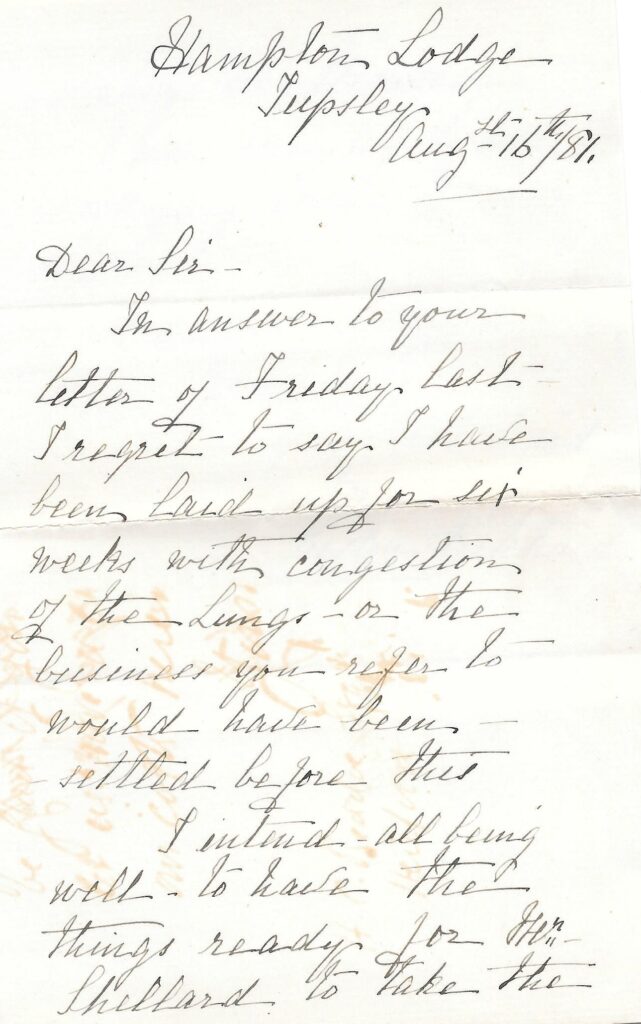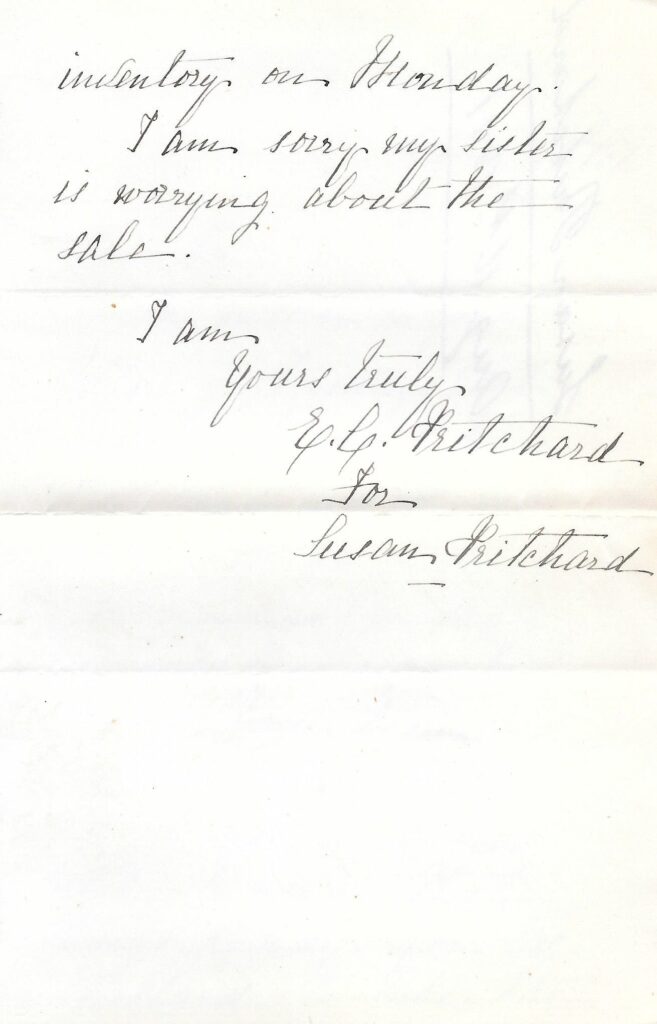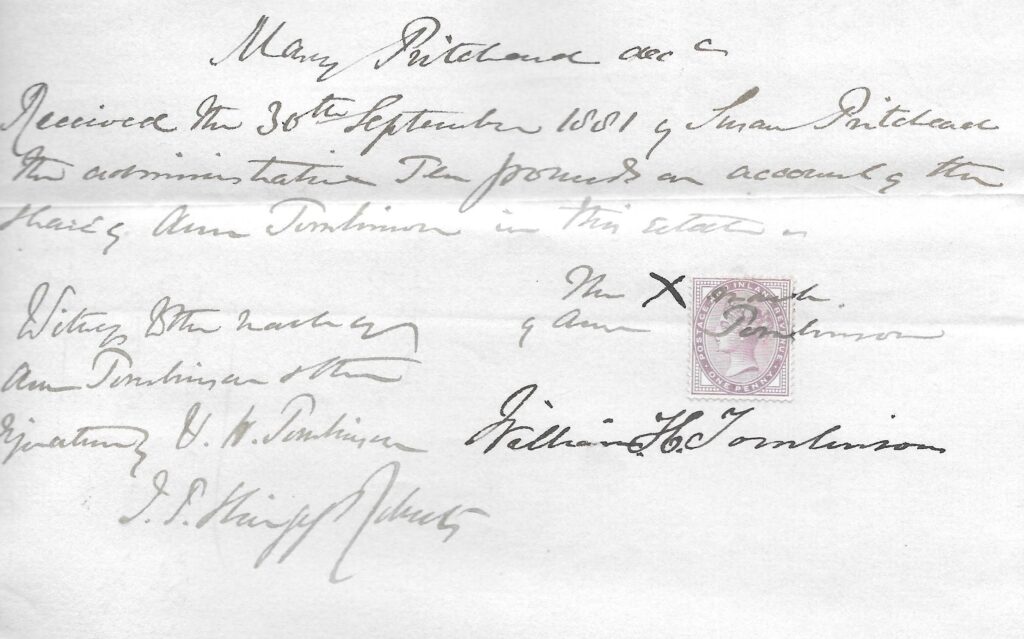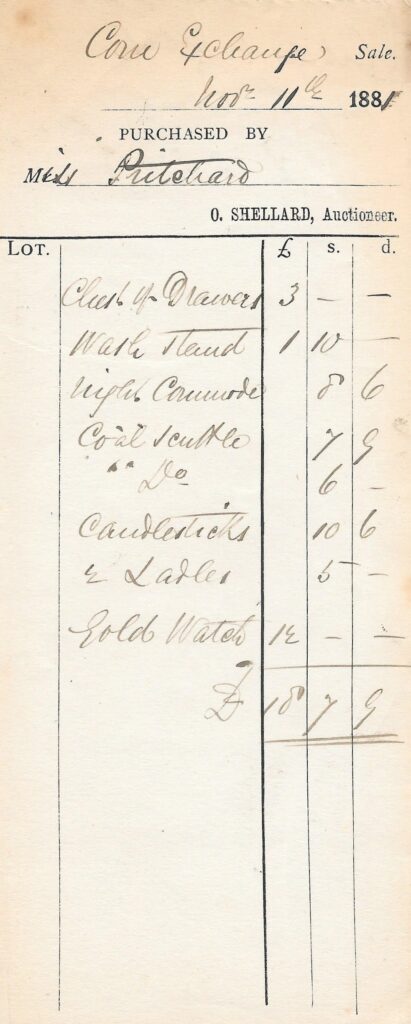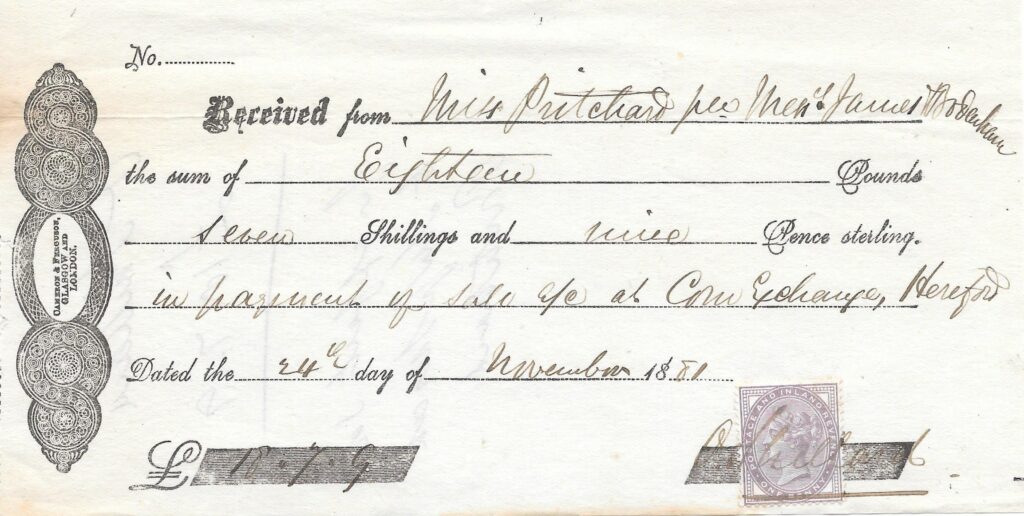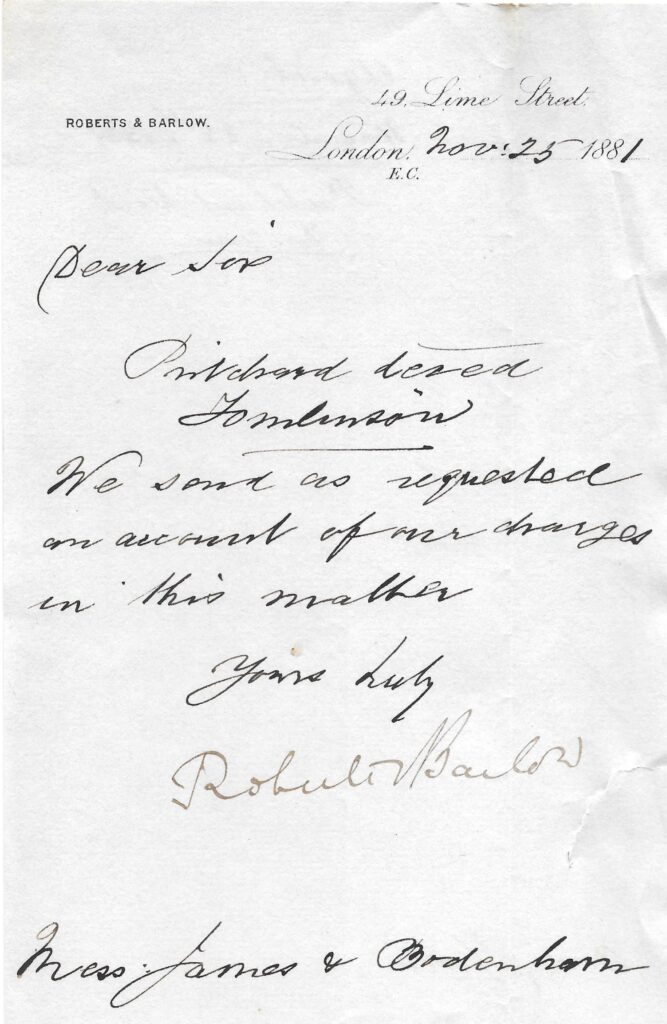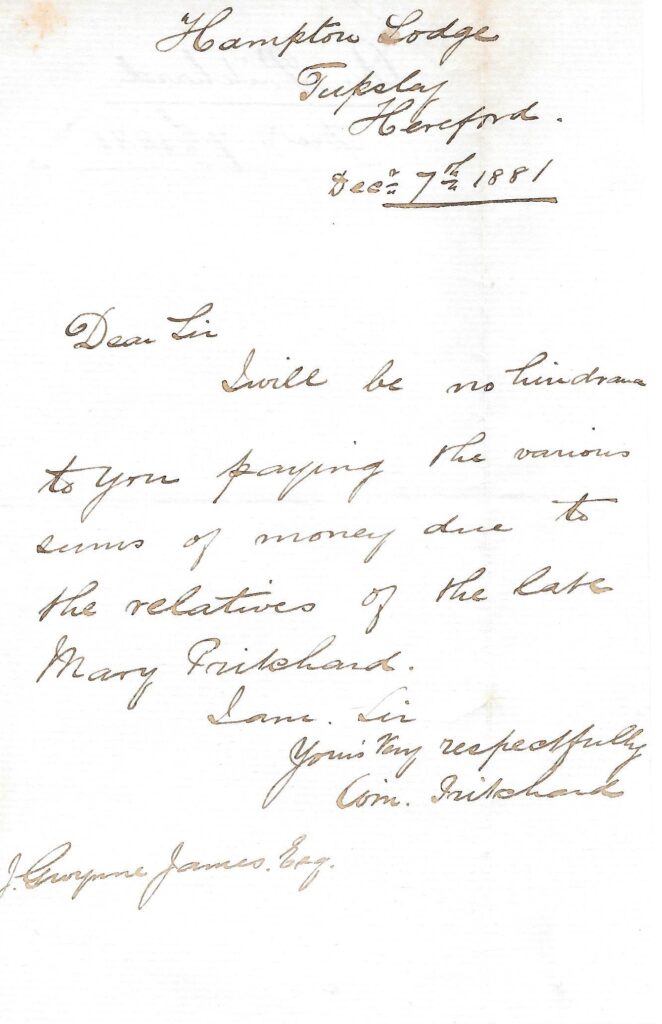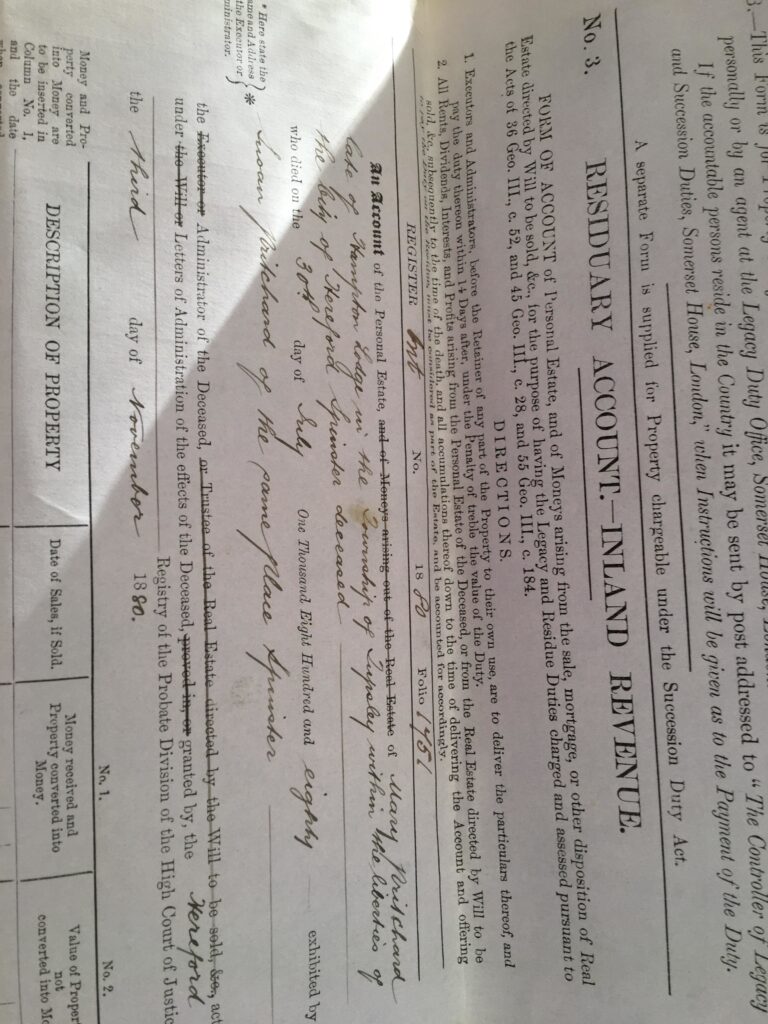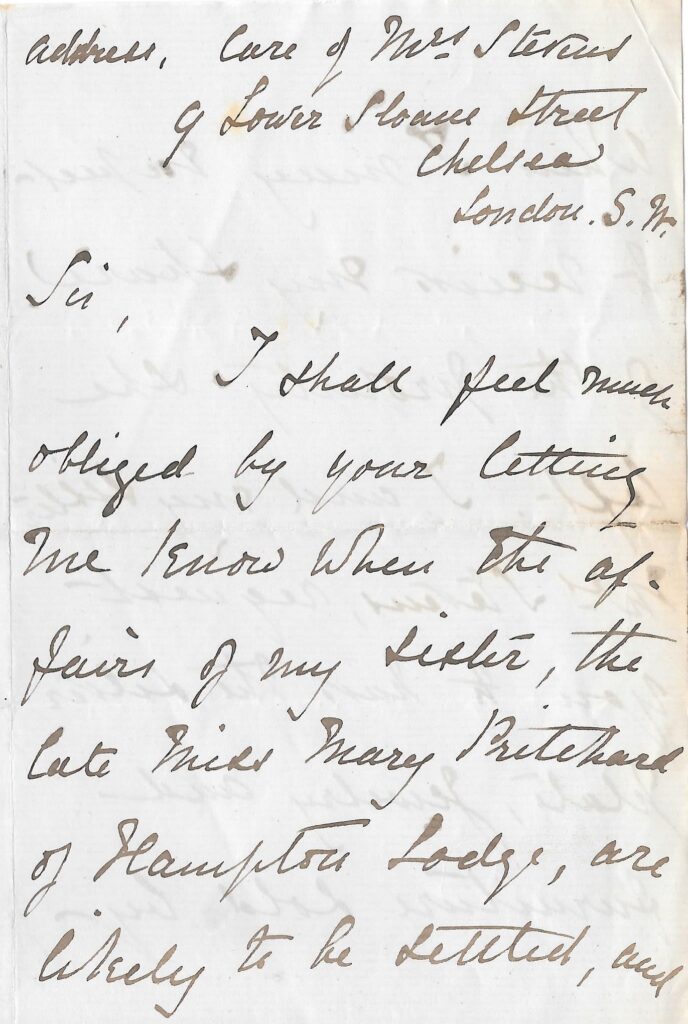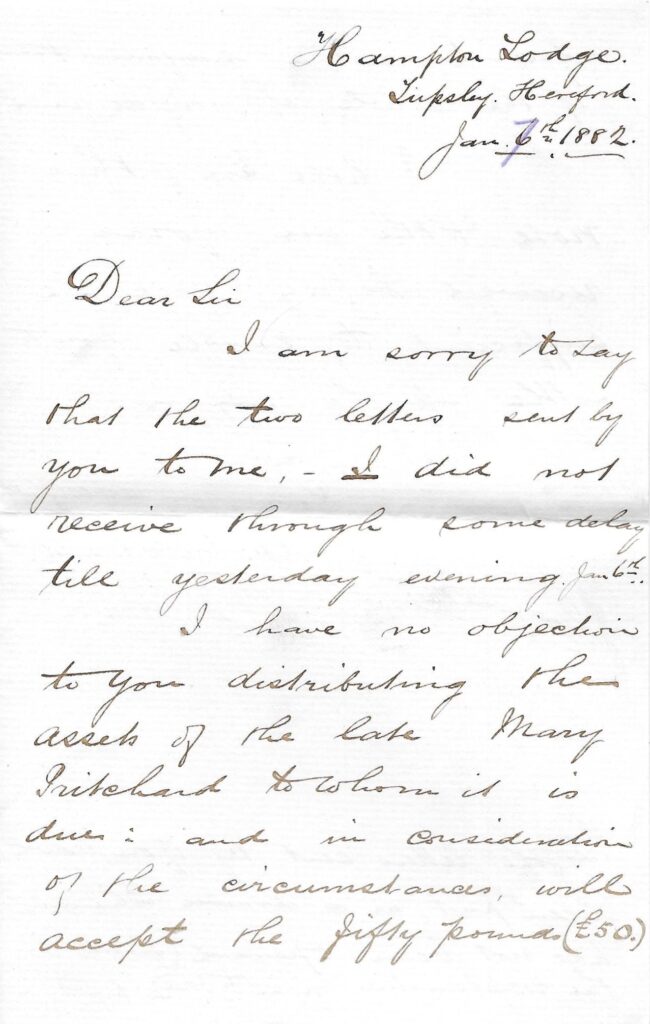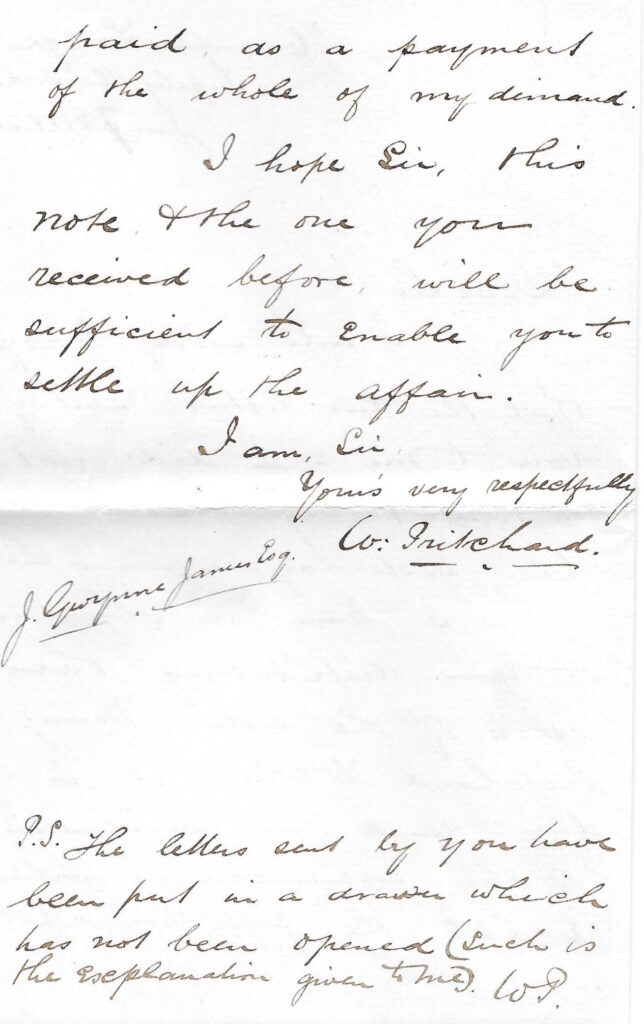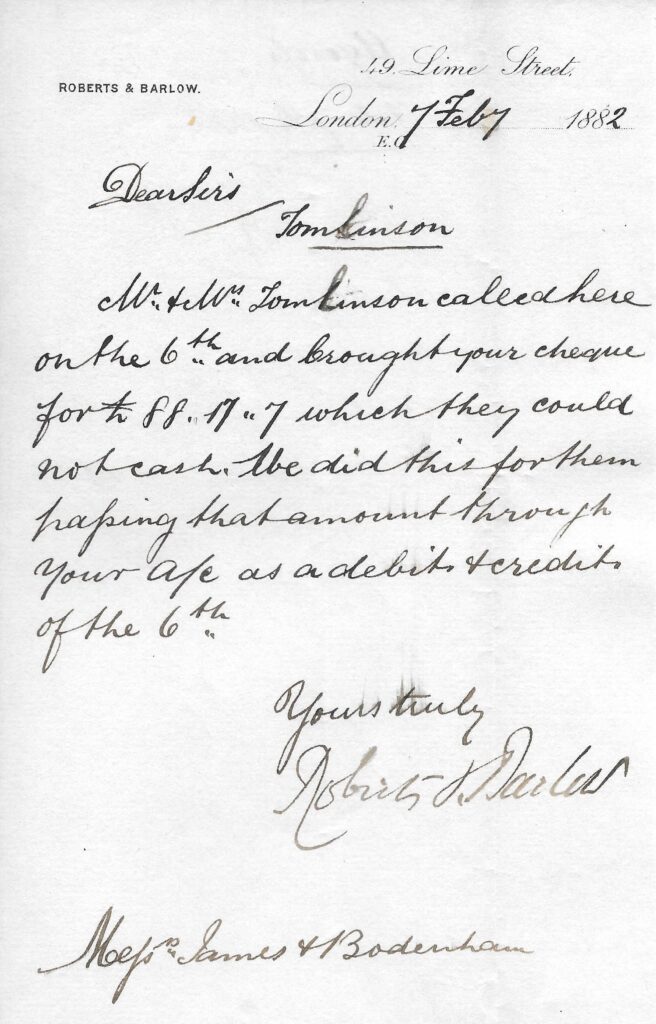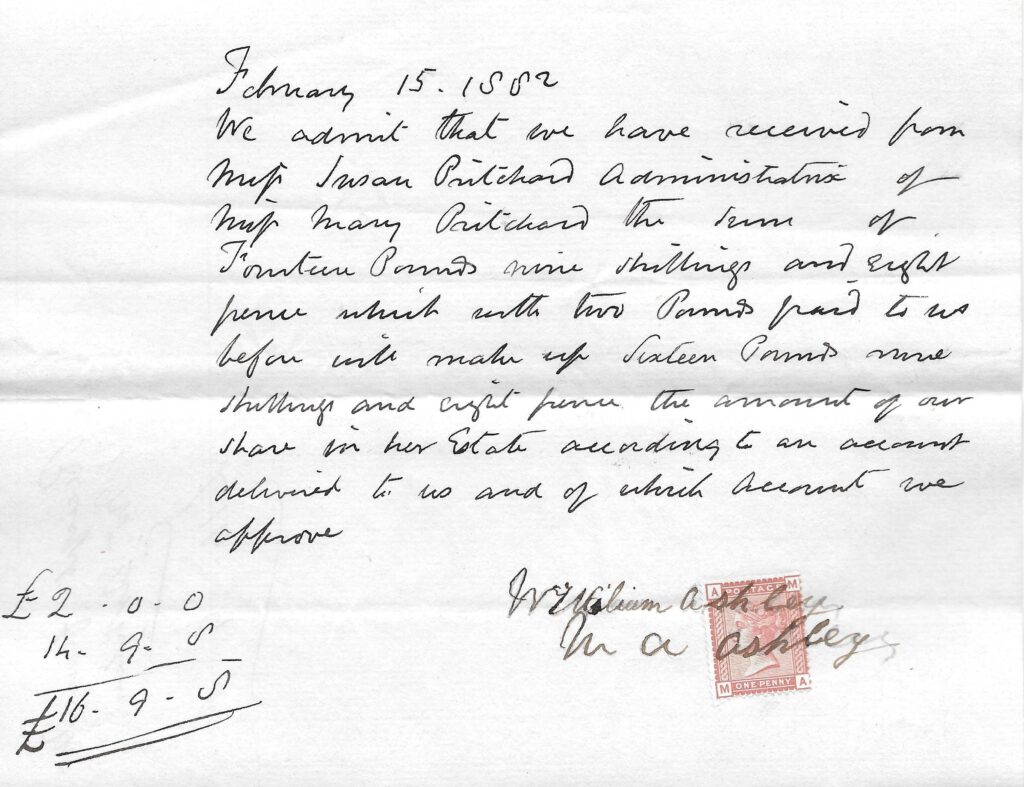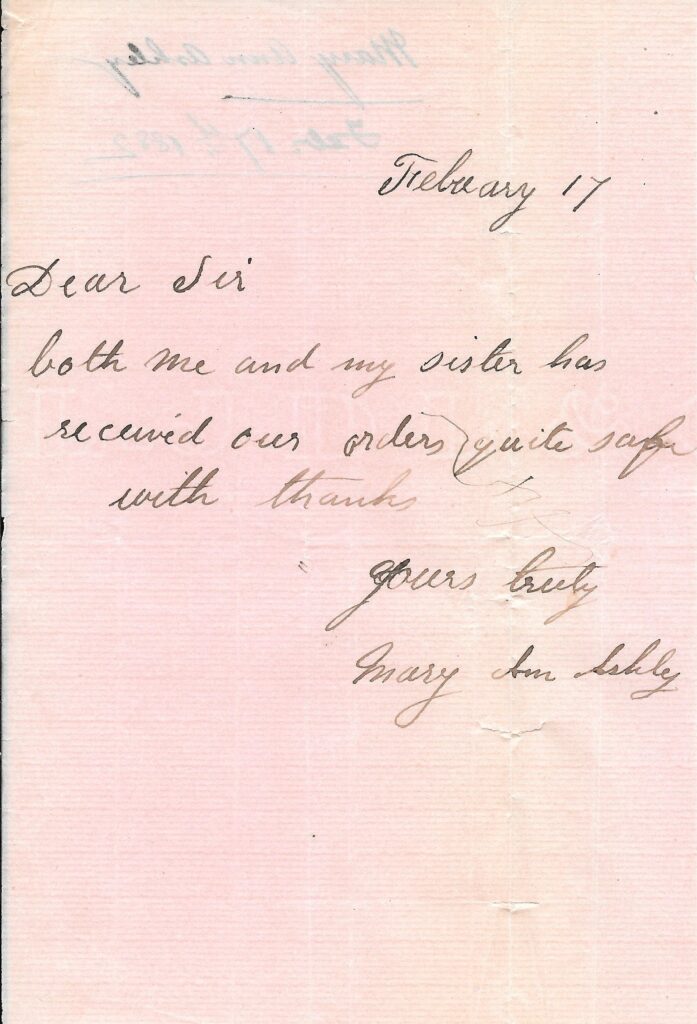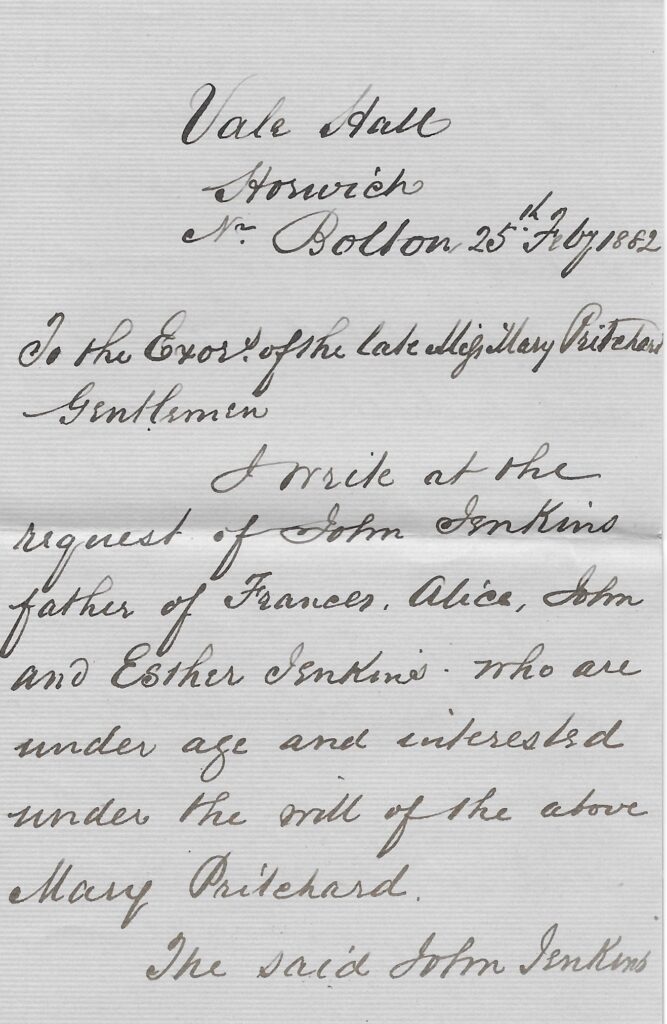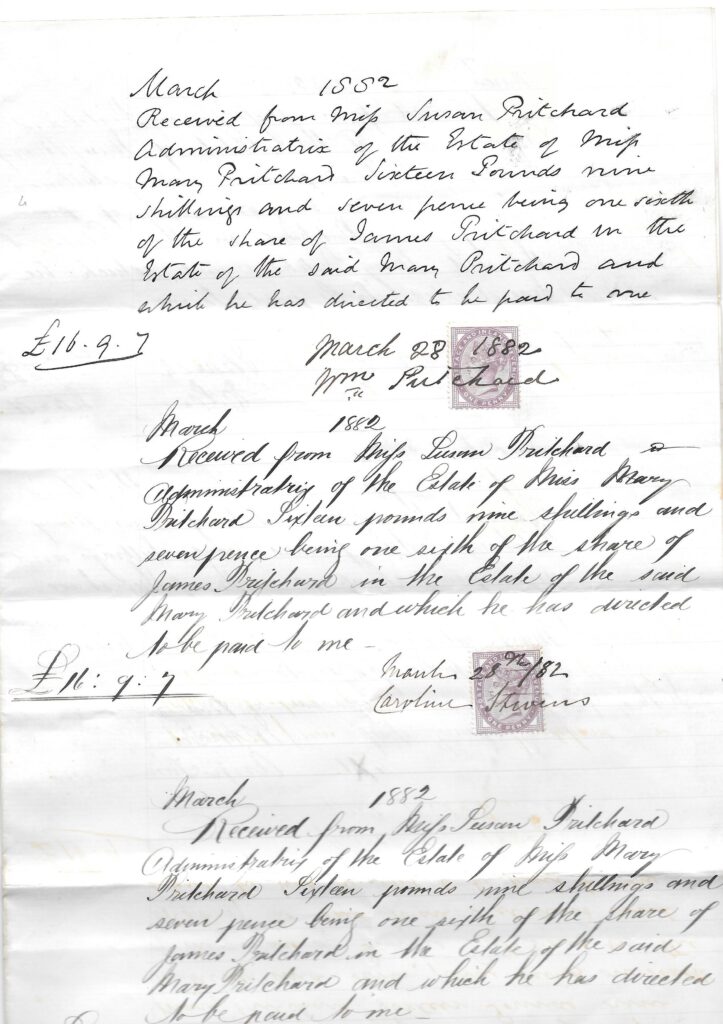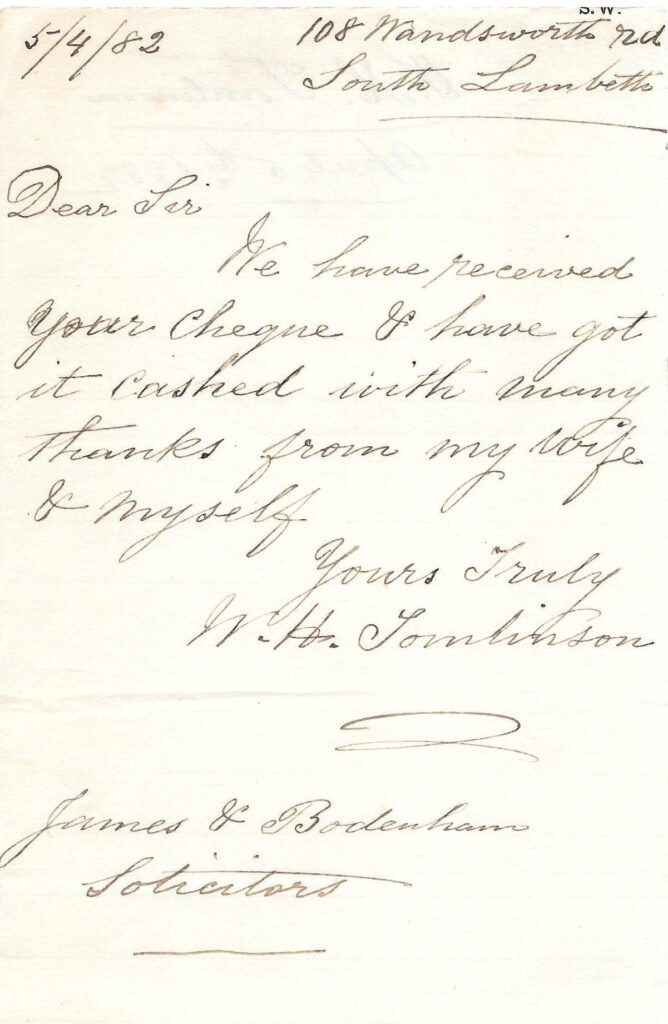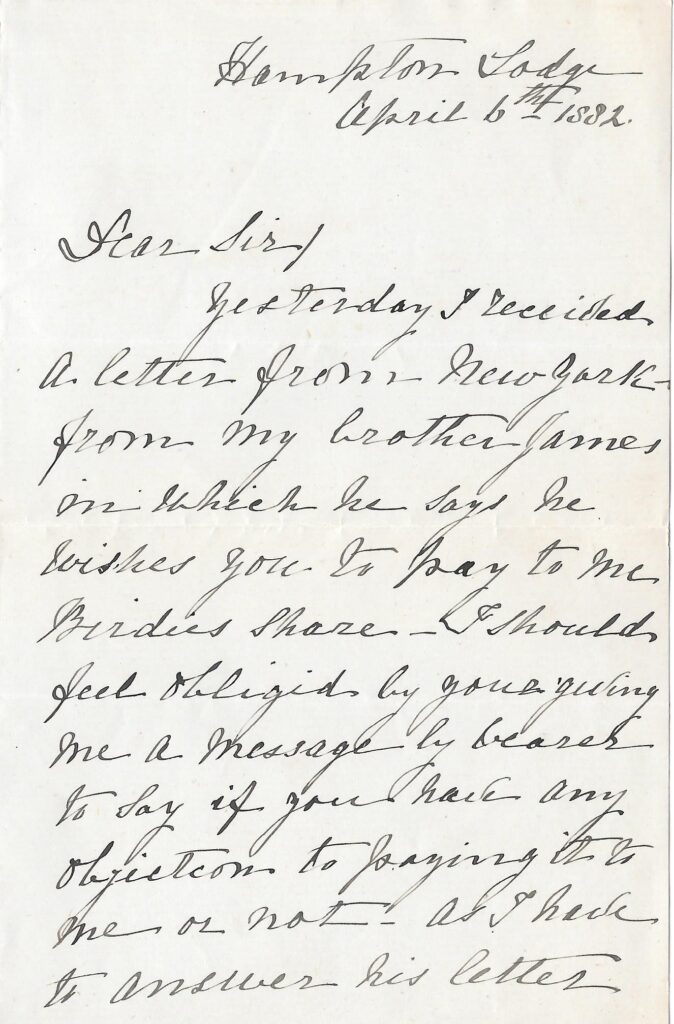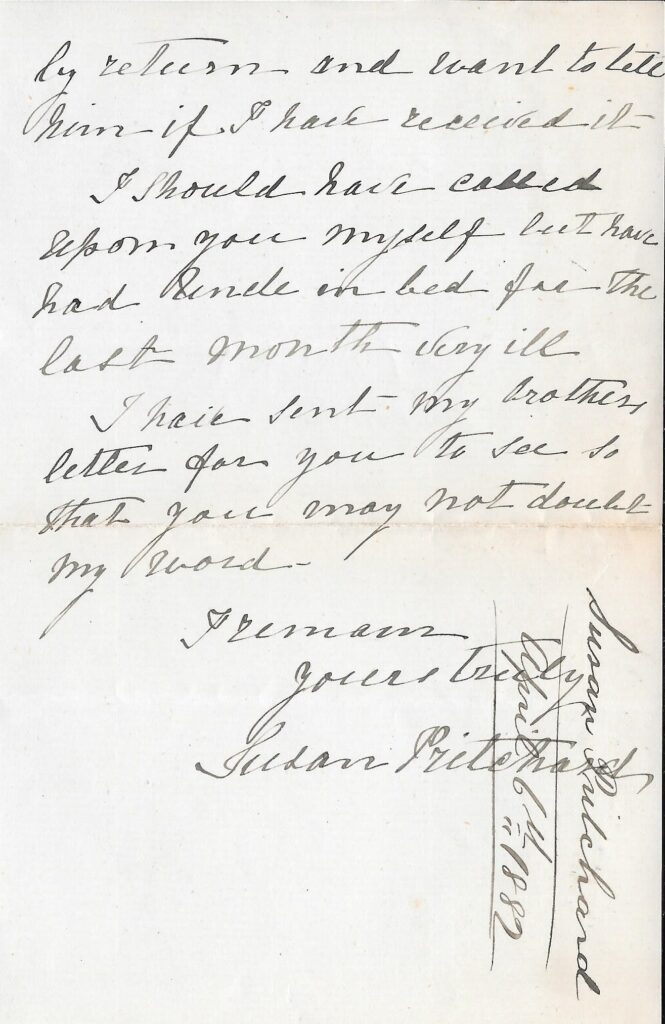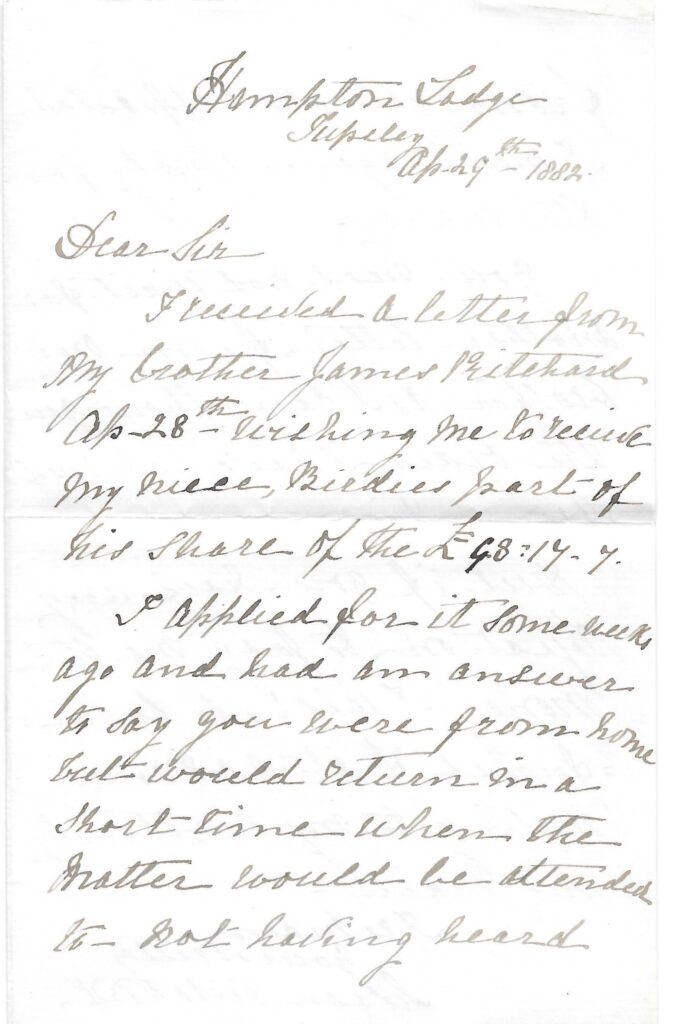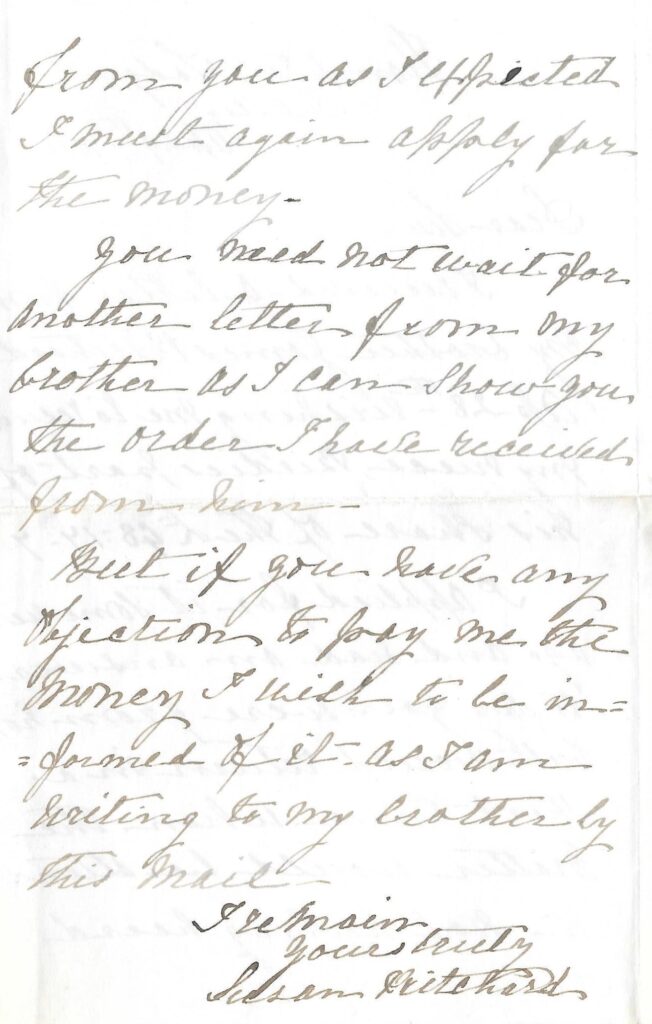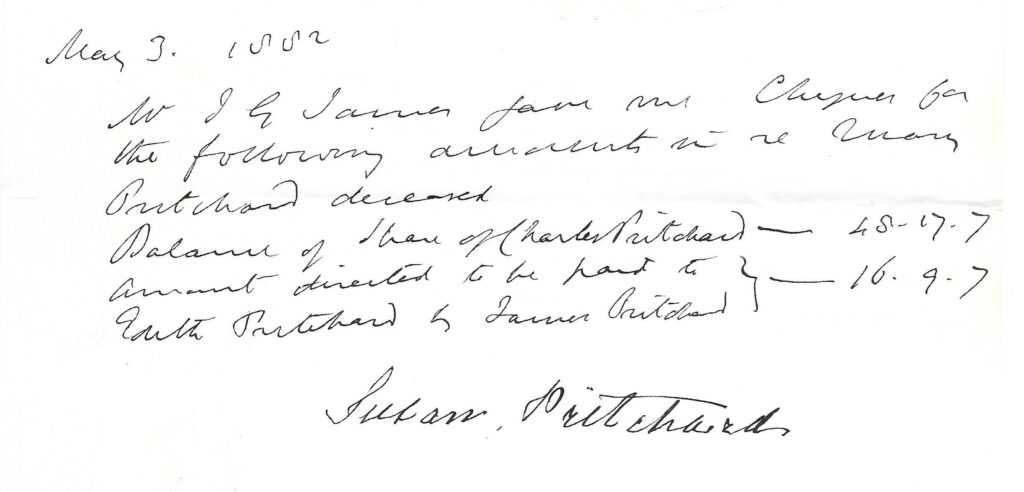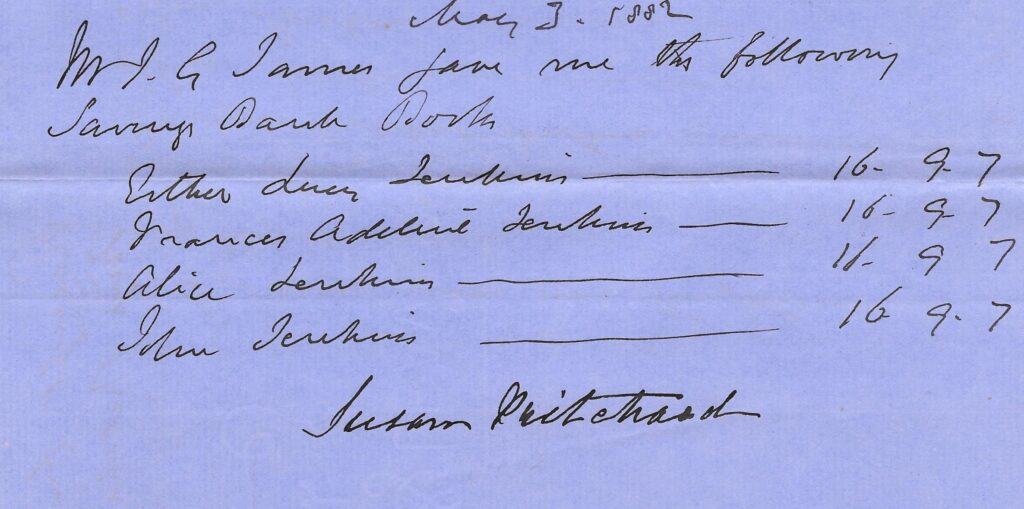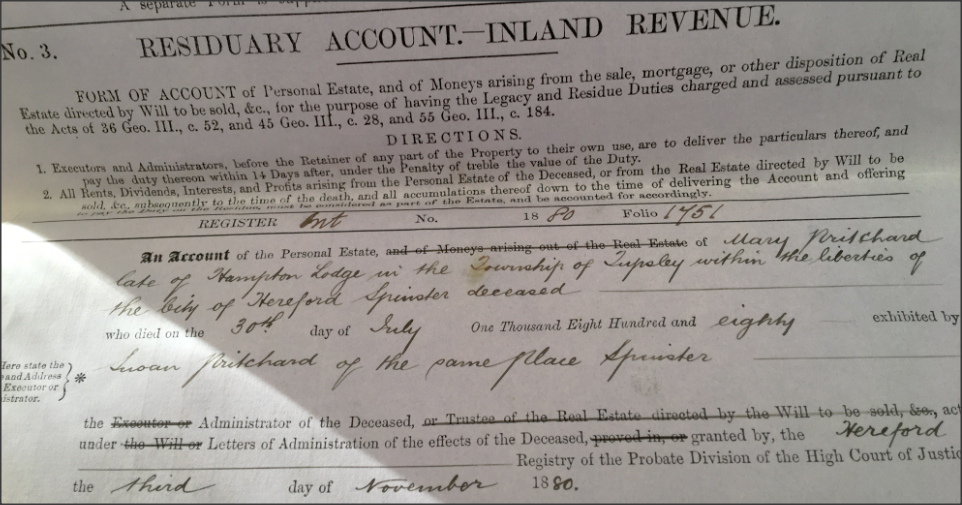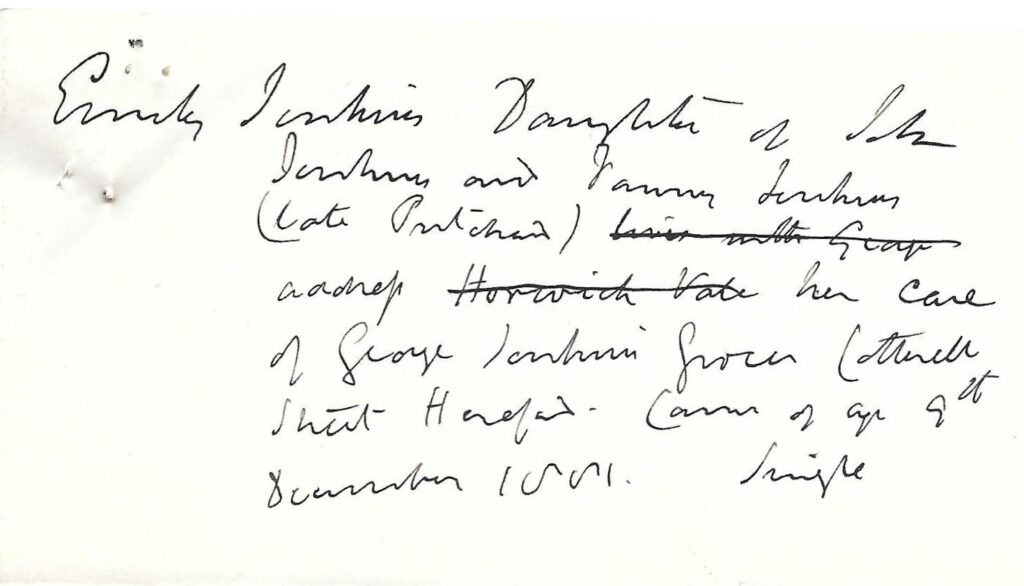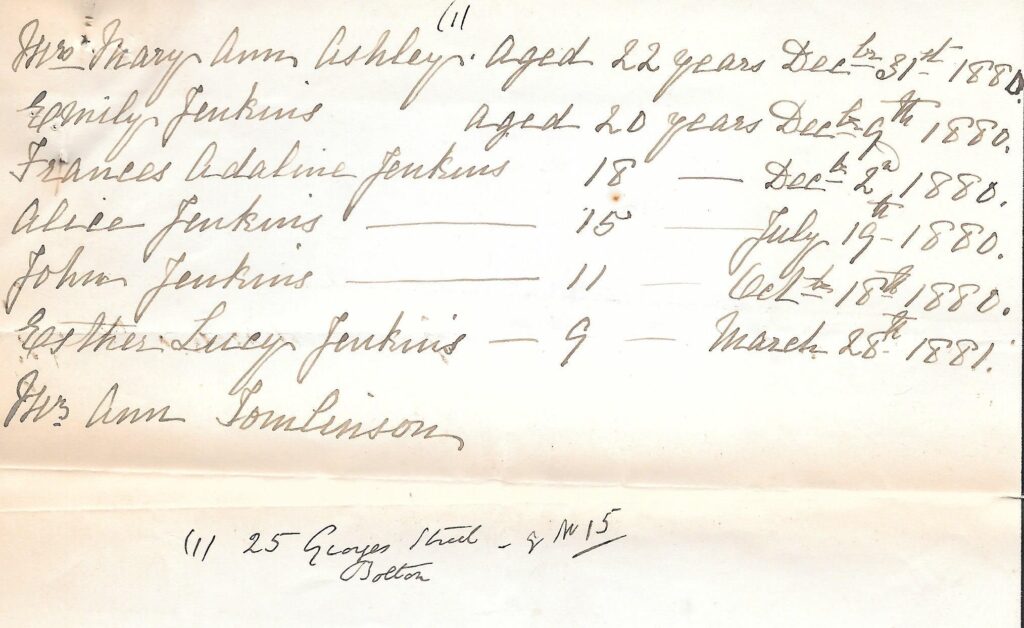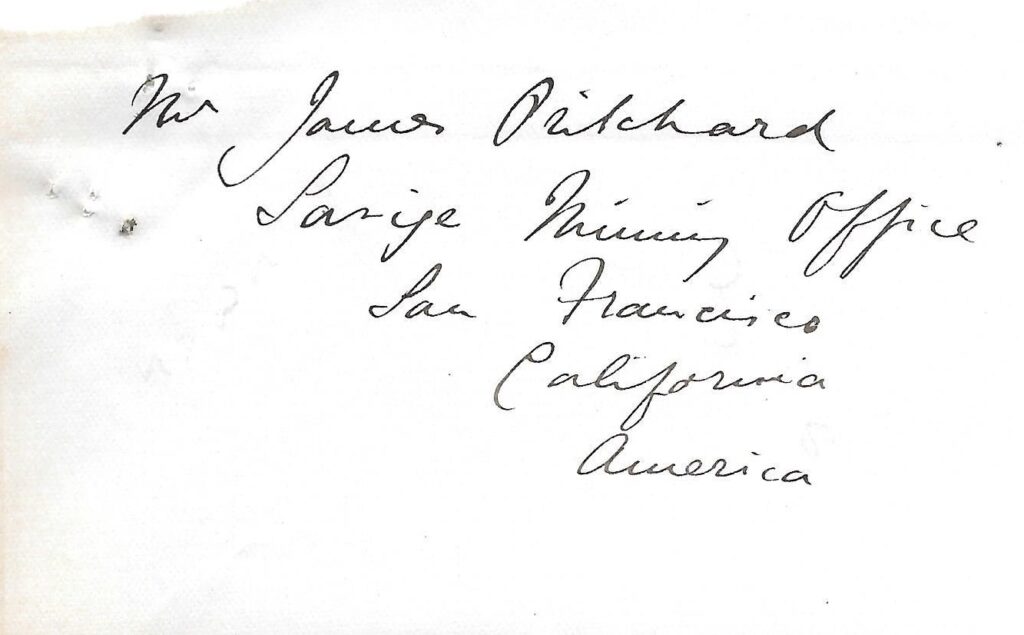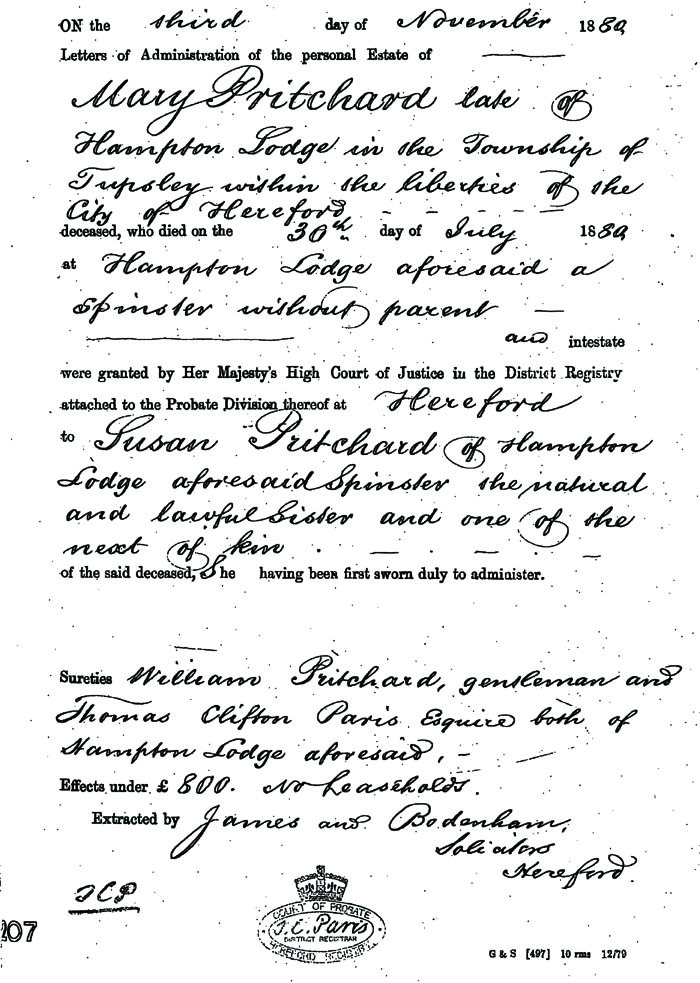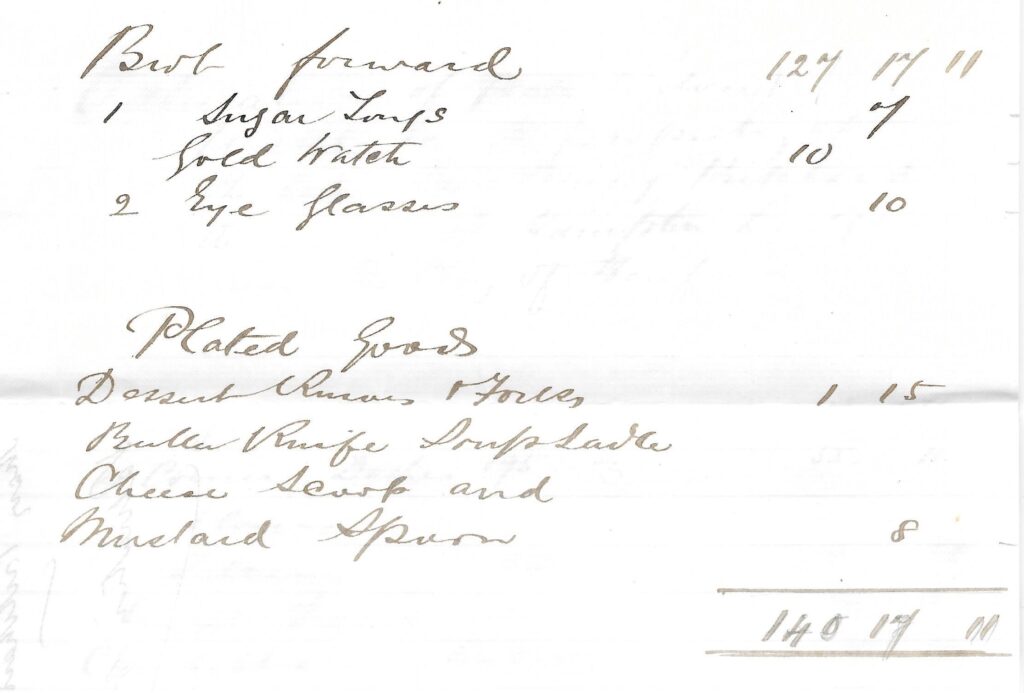A Life Quietly Lived, A Legacy Keenly Contested
Origins and Family
Mary Pritchard was born in Lugwardine, Herefordshire, and baptised there on 8 August 1839, confirming this as her accurate year of birth despite some later inconsistencies. She was one of ten children born to James Pritchard (b. 1809, Ledbury) and Ann Pritchard (née unknown, 1813–1882). The Pritchard family lived in and around Tupsley, just east of Hereford, a semi-rural area that at the time was a cluster of hamlets and farmsteads gradually becoming absorbed into the expanding city.
The 1851 census (see image extract) lists the family residing in Tupsley, with James working as a Miller & Innkeeper—a respectable and dual-income occupation that placed the Pritchards in a relatively stable position within local society. Mary Pritchard Tupsley Herefordshire is recorded among her siblings, including Mary Ann, John, Ann Whitney (a servant), and Susan, who would later become pivotal in the legal affairs surrounding Mary’s estate.
By the time of the 1861 census, Mary was living in Hampton Lodge, still in Tupsley, alongside her widowed mother Ann and several siblings. Her occupation is not listed, suggesting she may have worked domestically within the family home or in an unpaid caregiving role, which was common for unmarried daughters.
Later Years and Death
Mary Pritchard Tupsley Herefordshire remained unmarried throughout her life and continued to reside at Hampton Lodge, a notable dwelling in Tupsley, until her death. She passed away there on 30 July 1880, aged 37, and died intestate—without leaving a will. This led to legal complications that would see her estate contested, discussed, and petitioned by family members in the months that followed.
Despite the absence of a will, Mary left a personal estate valued under £800, a not-insignificant sum for an unmarried woman in rural England at the time. This suggests she may have inherited money or property, or possibly accrued savings through work or frugality.
Probate and the Family’s Response
On 3 November 1880, Letters of Administration were formally granted to her sister Susan Pritchard, who was also living at Hampton Lodge and designated in the legal record as “Spinster, the Sister and one of the Next of Kin.”
“Administration of the Personal Estate of Mary Pritchard late of Hampton Lodge in the Township of Tupsley in the Liberties of the City of Hereford, Spinster, who died 30 July 1880… was granted at Hereford to Susan Pritchard of Hampton Lodge, Spinster the Sister and one of the Next of Kin.”
— Probate Calendar, 1880
What makes this case particularly fascinating is the surviving paperwork, now digitised, which includes:
-
Official probate correspondence
-
Claims and letters from family members seeking advances from the estate
-
Handwritten pleas, some desperate in tone, requesting disbursements or clarification of entitlements
-
Inventories or household notes indicating the scope of Mary’s personal possessions
This material reveals a web of familial expectation, anxiety, and occasional tension—common themes in late Victorian family disputes over inheritance, particularly in cases of intestacy.
Historical Context and Interpretation
In the social and legal context of the 19th century, the death of an unmarried woman like Mary Pritchard presented a conundrum. Without a husband or direct descendants, responsibility for her estate typically fell to siblings. The value of £800 was a substantial inheritance—equivalent to well over £80,000 in today’s money, depending on economic measures used.
That such a sum was left unclaimed by a will speaks to either:
-
A belief by Mary that her family would distribute it fairly without instruction
-
A sudden or unexpected death
-
Possibly, a lack of legal counsel or knowledge about the importance of drafting a will
Either way, the archived family letters serve as a rich primary source for understanding the emotional and financial landscape of the Pritchard family in 1880. They also show the importance placed upon money, property, and perceived fairness—even within tight-knit rural families.
A Life Remembered
Mary Pritchard lived and died in the same place: Tupsley, a quiet community that became a microcosm of wider social trends in Victorian England. She was:
-
A dutiful daughter and sister
-
A resident of a changing rural-urban borderland
-
A figure whose legacy, though modest, stirred passion and concern among her surviving relatives
The records of her life and estate offer a window into 19th-century Herefordshire society—its values, its legal customs, and the interpersonal strains that surfaced when money and loss collided.
Appendices and Sources
-
Census Record, 1851 (Tupsley) – Mary Pritchard listed as daughter, aged 11
-
Census Record, 1861 (Tupsley) – Mary residing at Hampton Lodge with family
-
Probate Calendar, 1880 – Entry for Mary Pritchard confirming intestacy and administration to Susan Pritchard
-
Digitised Estate Papers – Family letters, inventories, legal documentation (in private collection)
-
Historical Value Equivalents – Estimate: £800 in 1880 ≈ £80,000+ today
-
Contextual Reference – Intestacy laws in England (pre-1925), inheritance norms among unmarried women
Read more about Victorian Herefordshire probate cases.
Mary Pritchard Tupsley Herefordshire remains a compelling example of how ordinary rural lives in Victorian England left behind extraordinary archival traces.
You can see the archive here:
Tupsley in the Victorian Era (1837–1901)
Location & Setting
Tupsley was a rural hamlet and township on the eastern edge of Hereford, situated in the hundred of Greytree and the parish of Lugwardine (later becoming part of the civil parish of Tupsley). Throughout the Victorian period, it retained a semi-rural character, with scattered farms, cottages, and large houses — including gentry residences and working-class dwellings.
By the late 19th century, Tupsley was transitioning into a residential suburb for the growing city of Hereford, though much of its early Victorian identity remained agricultural and service-oriented.
Economy and Employment
In the early Victorian period (1830s–1850s), the local economy of Tupsley was based on:
-
Agriculture (especially hop-growing and livestock)
-
Milling (the Pritchard family were millers and innkeepers — typical dual trades)
-
Domestic service in nearby Hereford or larger homes in Lugwardine and Tupsley
-
Small-scale trade (tailors, cobblers, blacksmiths, grocers)
By the 1870s–1890s, Tupsley also attracted:
-
Retired professionals and military men
-
Educated middle-class families seeking cleaner air than the town centre
-
Builders and craftsmen, due to suburban housing development
Hampton Lodge and Other Residences
Properties like Hampton Lodge, where Mary Pritchard lived, were genteel homes — often housing widows, unmarried women, or clergy families. These homes reflected quiet respectability rather than wealth, and women like Mary and Susan Pritchard would have been seen as “genteel spinsters” — respectable, if somewhat economically constrained.
Religion and Community
Tupsley lacked its own church for much of the early Victorian era. Residents were served by:
-
St Peter’s, Lugwardine (the baptism site of Mary Pritchard)
-
St Paul’s, Hereford (established mid-19th century to serve outlying parishes)
Religion shaped daily life. Regular attendance at services, Sunday schools, and moral societies was typical. The Church of England was dominant, though Methodism and Baptist chapels gained strength by the 1870s.
Population and Governance
Tupsley had a modest population throughout the 19th century:
-
1841 census: ~400–500 people
-
1881 census: ~600–700, reflecting slow but steady growth
-
1901 census: approaching 1,000 as Hereford suburbs expanded
Governance transitioned from traditional parish vestries to inclusion within Hereford’s municipal jurisdiction, particularly after the Municipal Corporations Act 1835 and later Local Government Acts.
Social Structure
Victorian Tupsley exhibited the classic rural hierarchy:
-
Gentry/farm owners (e.g., rectors, retired officers)
-
Tenant farmers
-
Tradesmen and skilled artisans
-
Labourers and domestic servants
-
Unmarried women (like Mary Pritchard) living in family homes often became caretakers or holders of modest estates
Unmarried women living with widowed parents were common in census records — they often had limited rights and opportunities, especially regarding property unless they inherited or were named in wills (as Mary was not).
Death and Burial
Residents of Tupsley were typically buried at:
-
Lugwardine churchyard (pre-1860s)
-
Hereford Cemetery (opened 1862)
-
Later at St Paul’s Church, once its burial grounds were consecrated
Mary Pritchard, who died in 1880, was likely buried at either Lugwardine or Hereford Cemetery. Burial records from Hereford Archives and Records Centre or parish registers can confirm this.
Maps and Property Records
Historic Ordnance Survey maps (1st edition, 1880s) show:
-
Hampton Park Road (leading into Tupsley)
-
Scattered large houses with named lodges
-
Farmland, hop gardens, and orchards
-
A rural road layout with only gradual urban infill
These maps are available from:
-
Herefordshire Archives
-
National Library of Scotland Maps Portal
-
British History Online for contextual histories
Sources for Further Research
-
Pigot’s Directory (1830s) and Kelly’s Directory (1885–1895) for trades and residents
-
Herefordshire Archives (HARC) for wills, parish registers, land records
-
Census data (1841–1901) for Pritchard family, neighbours, servants
-
British Newspaper Archive – local news, deaths, estate notices
-
Parish records of Lugwardine and St Paul’s for baptisms and burials

